BOOKS
BOOKS
BOOKS
Василий Кандинский. Контрапункт: «Композиция VI» — «Композиция VII»
Wassily Kandinsky. Counterpoint: Composition VI — Composition VII








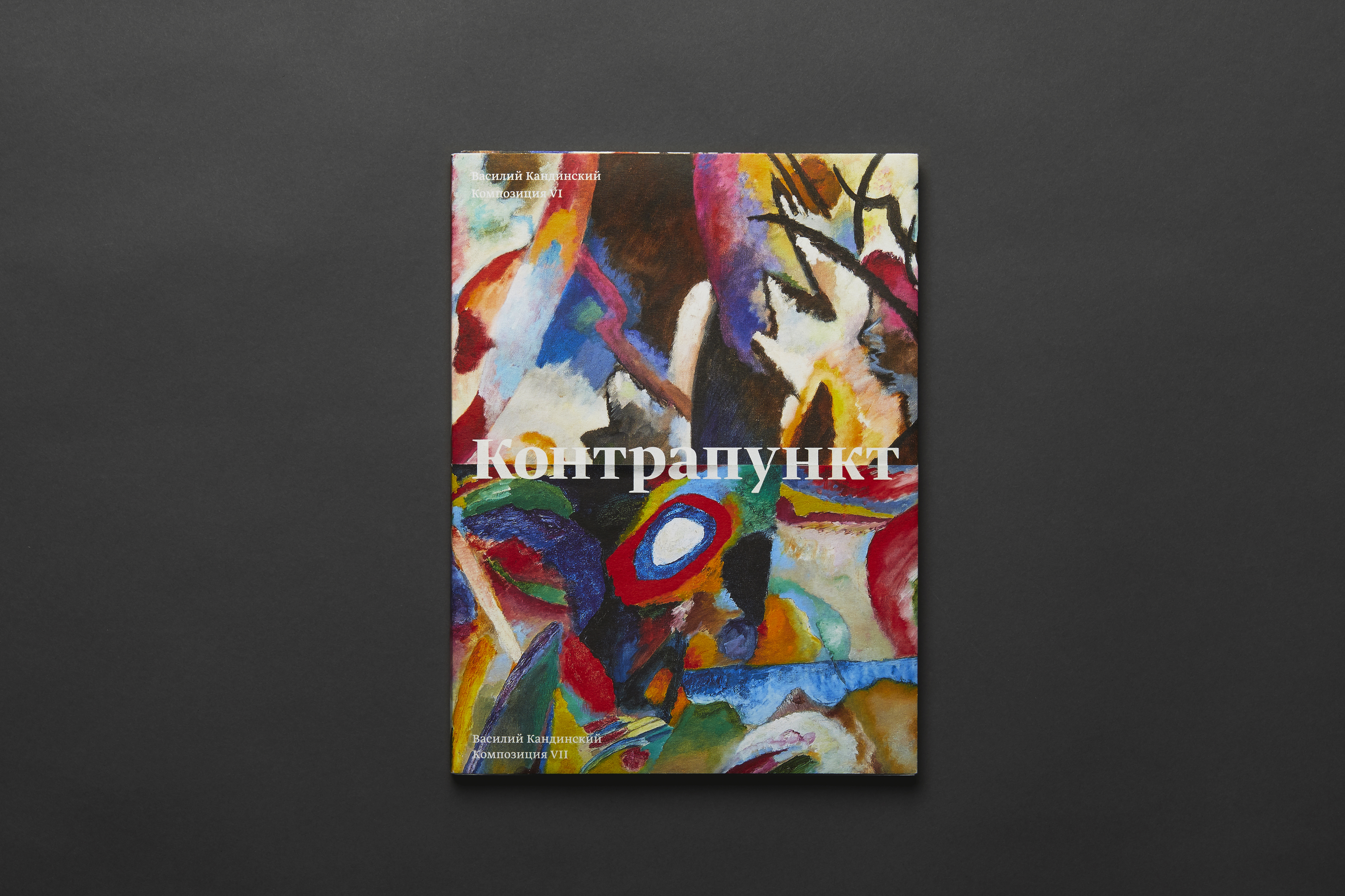
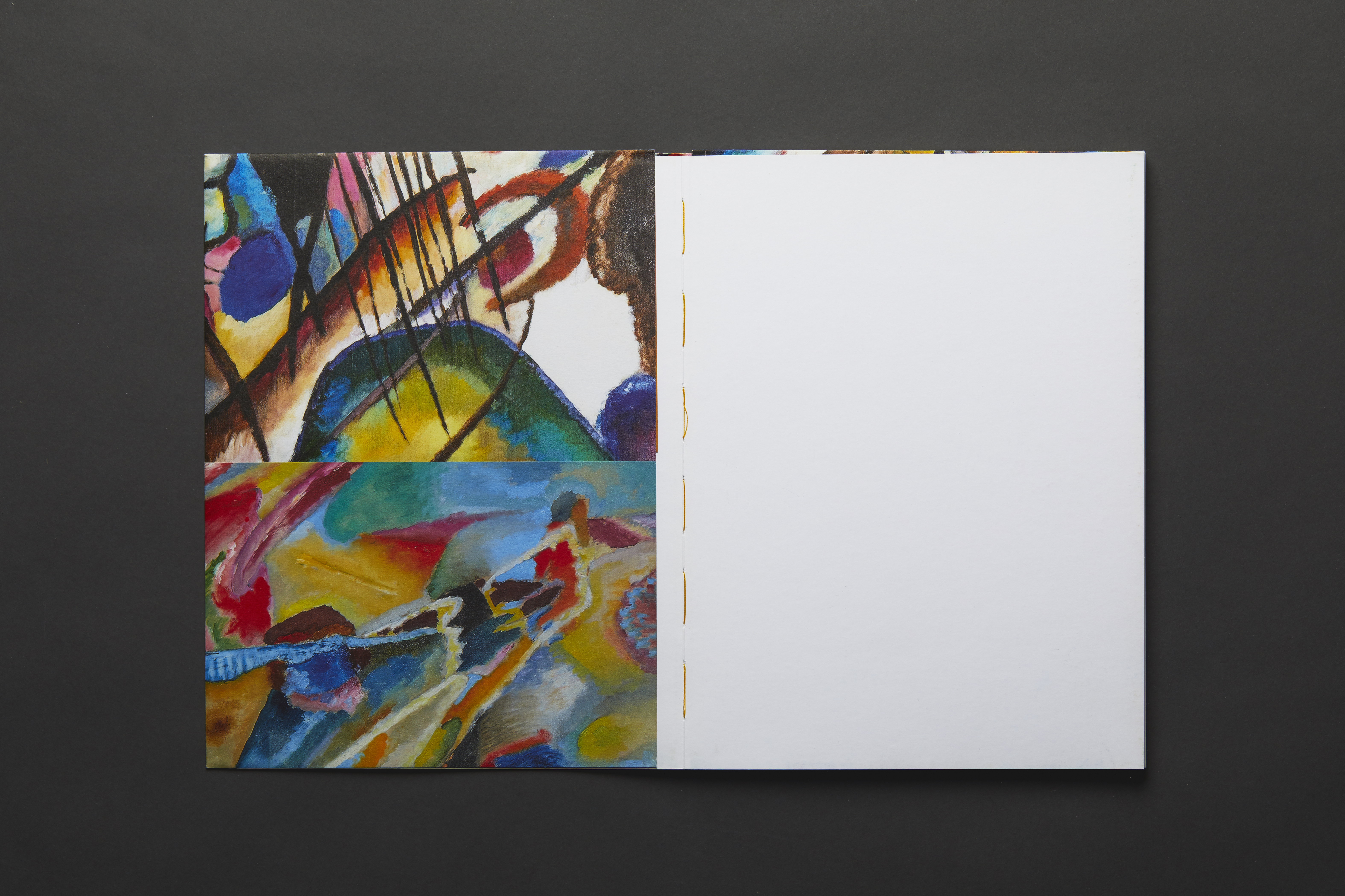
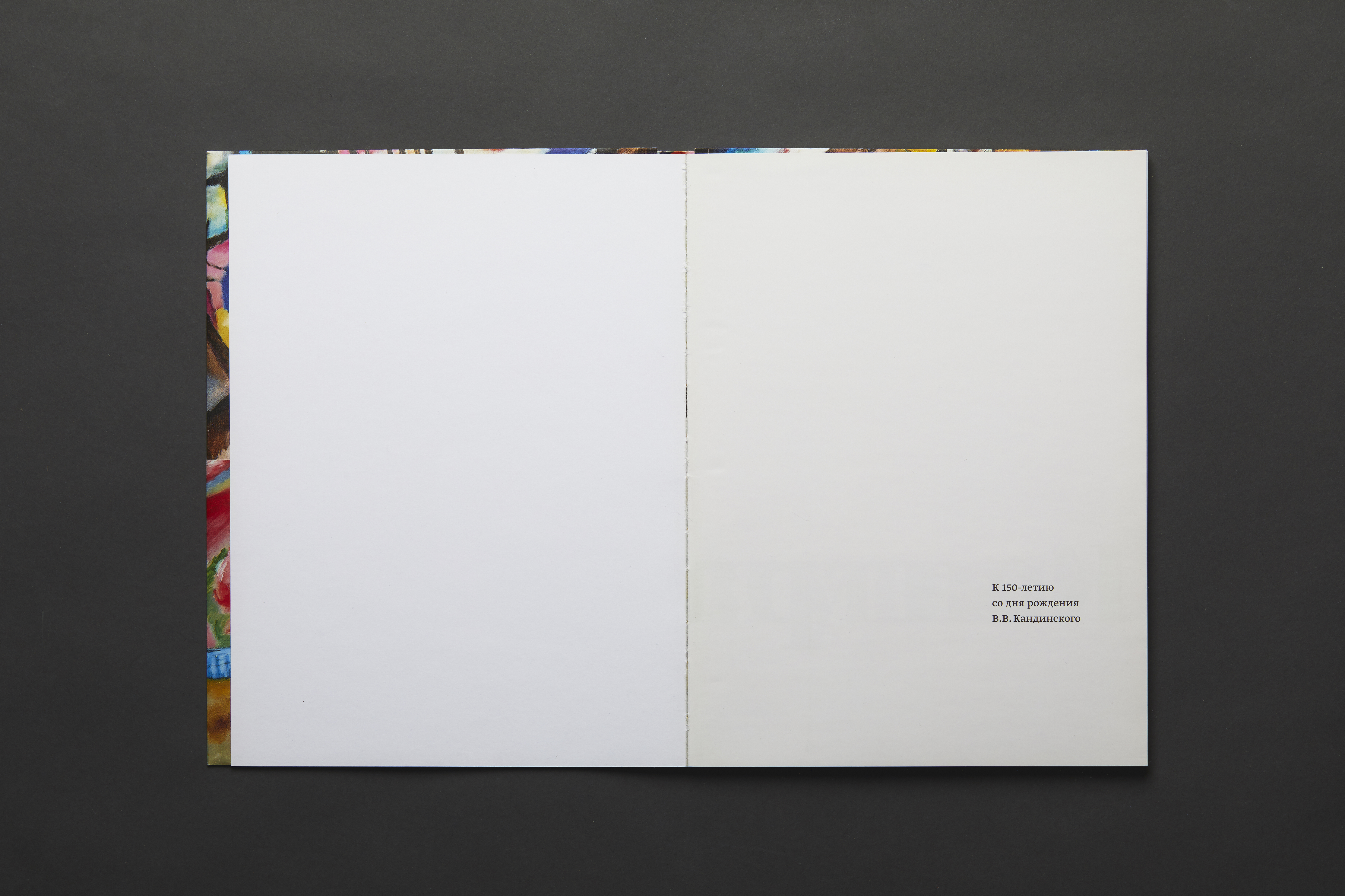

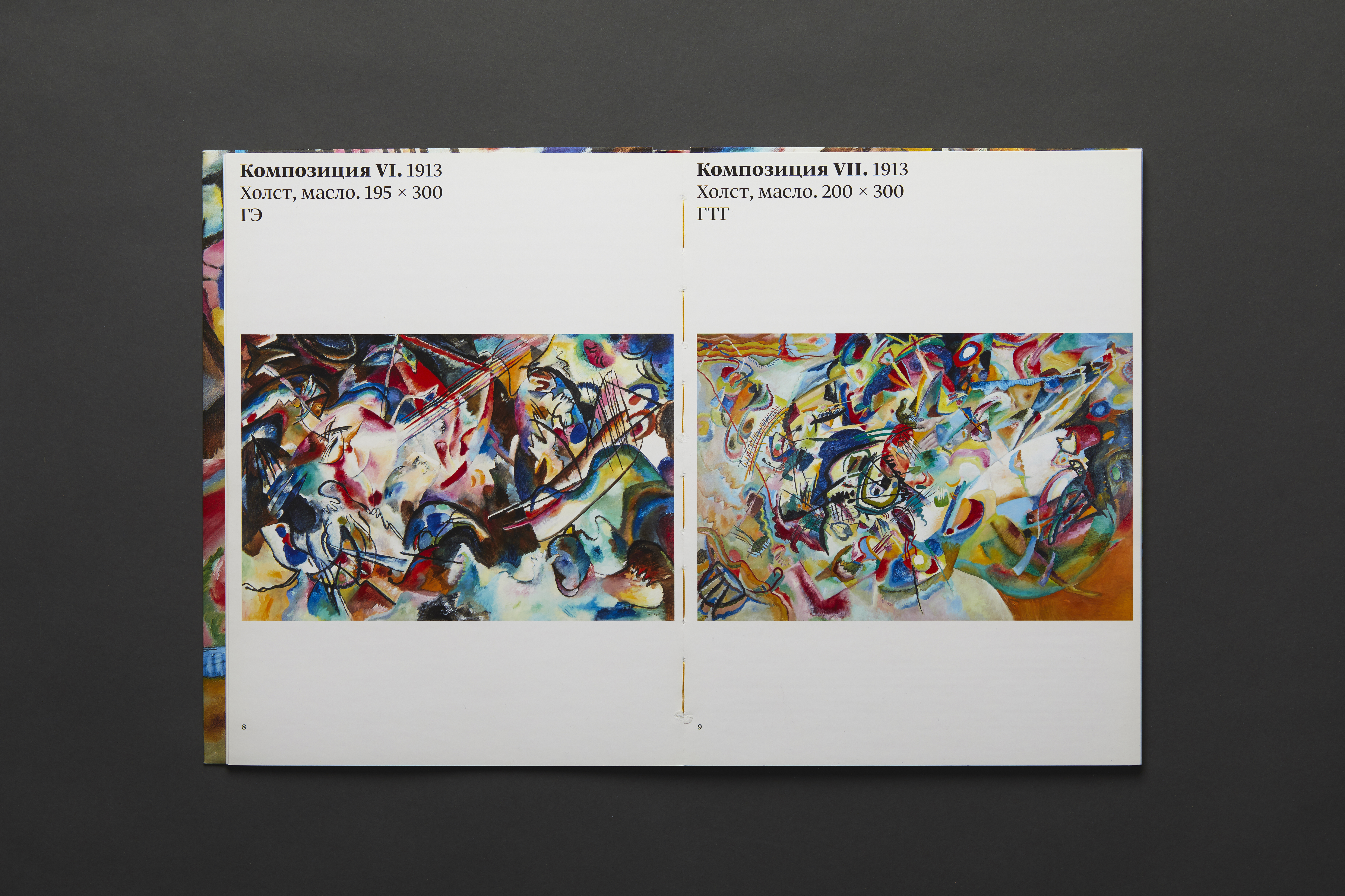
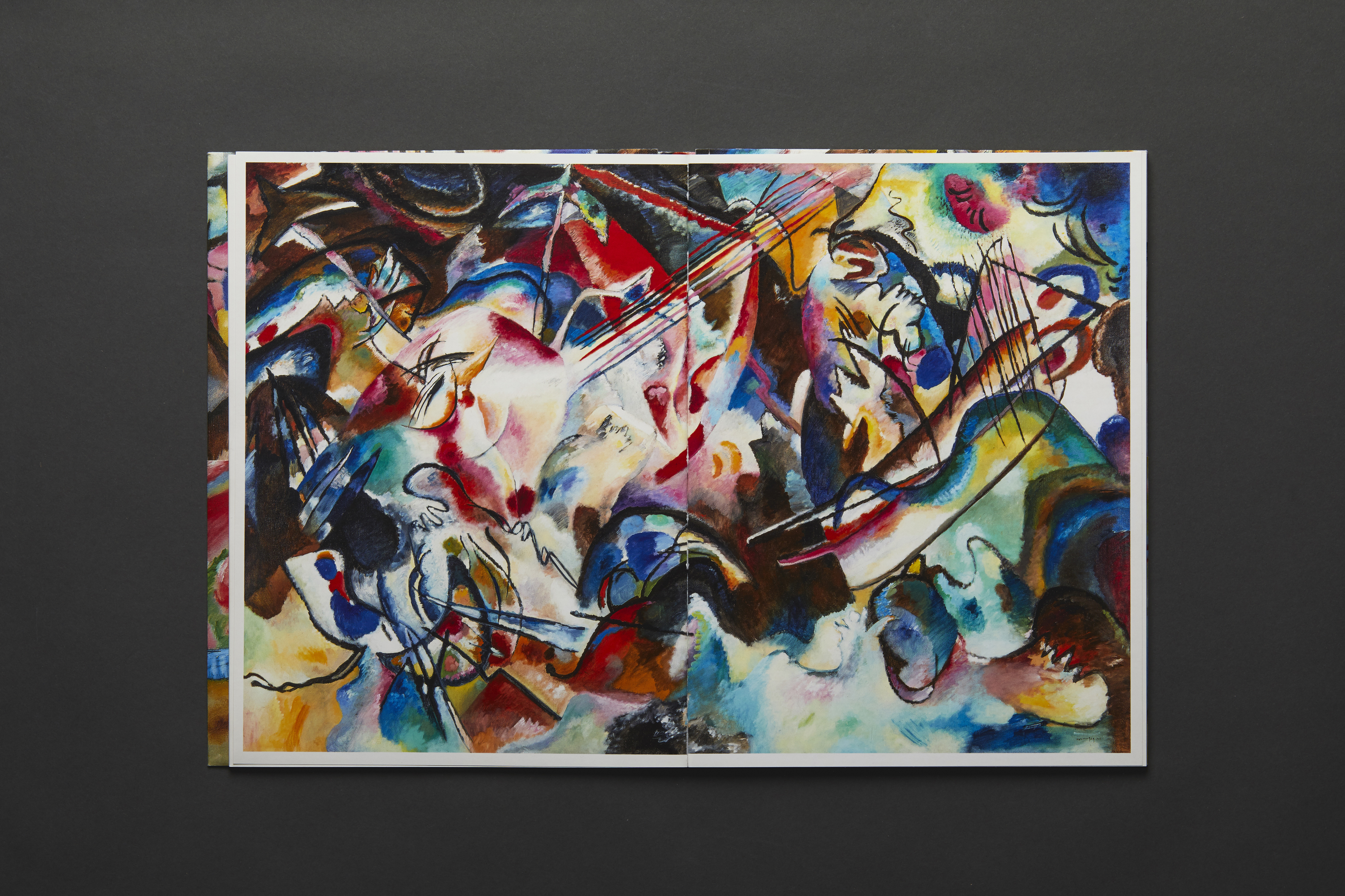
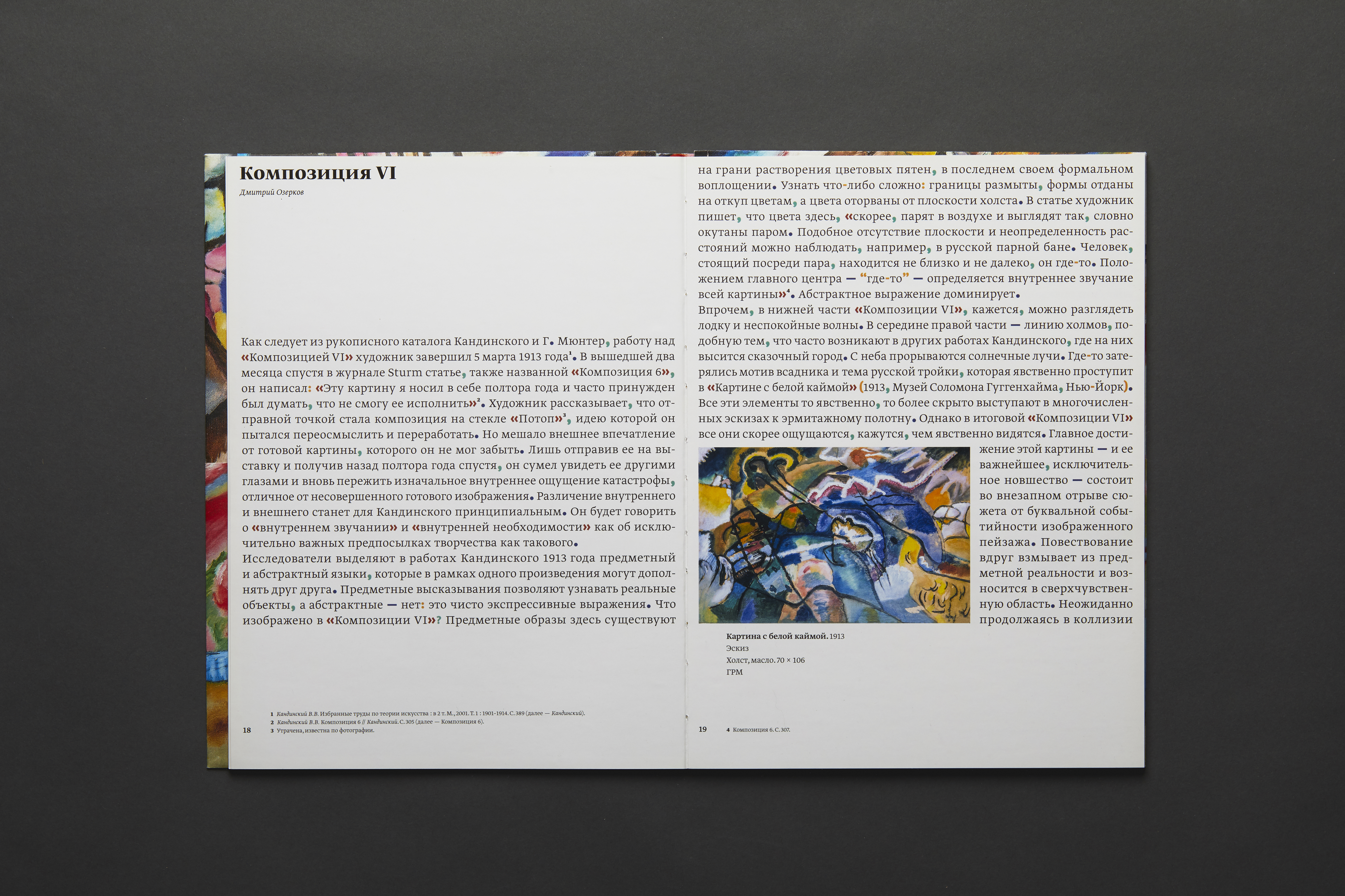
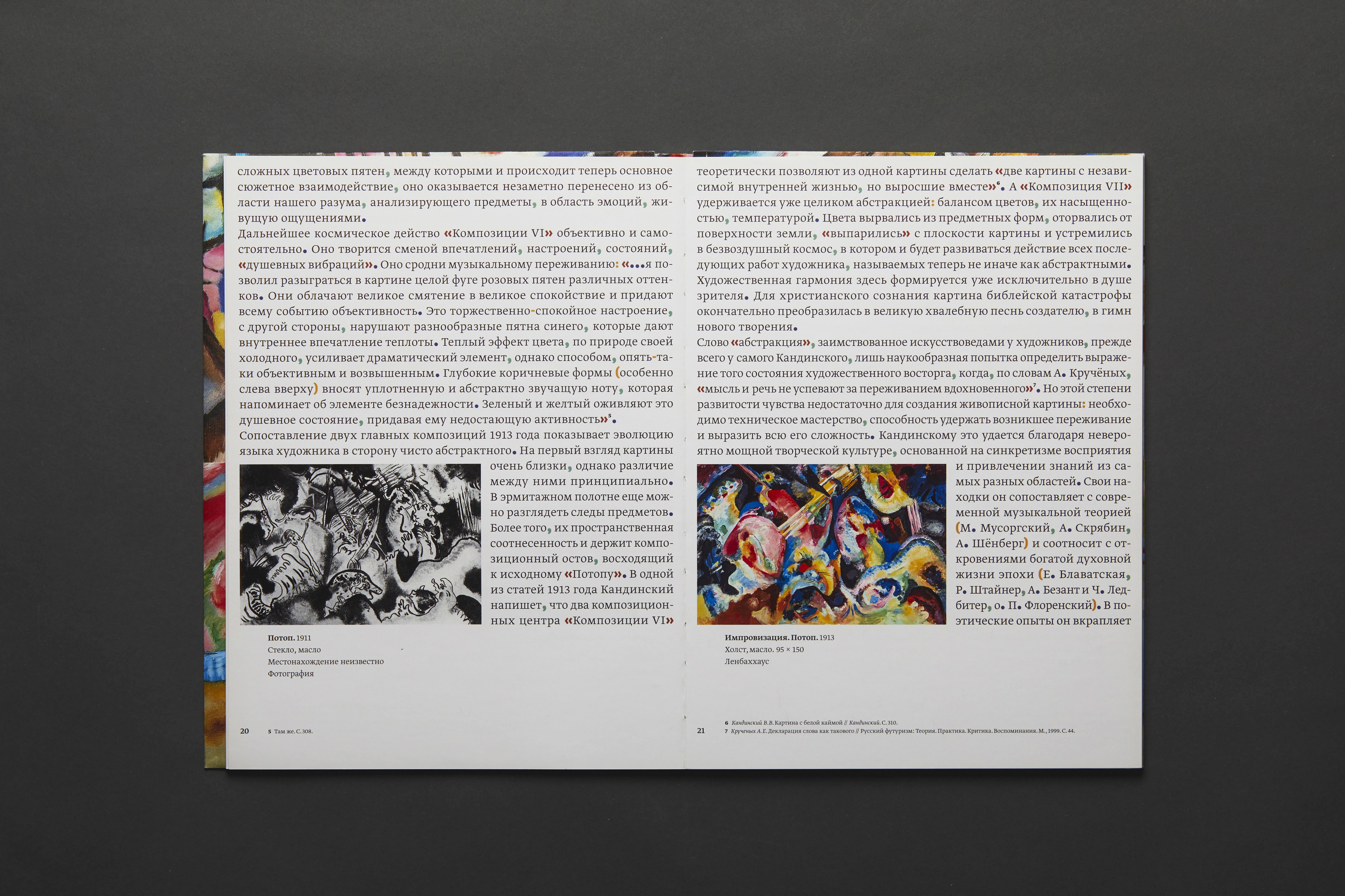
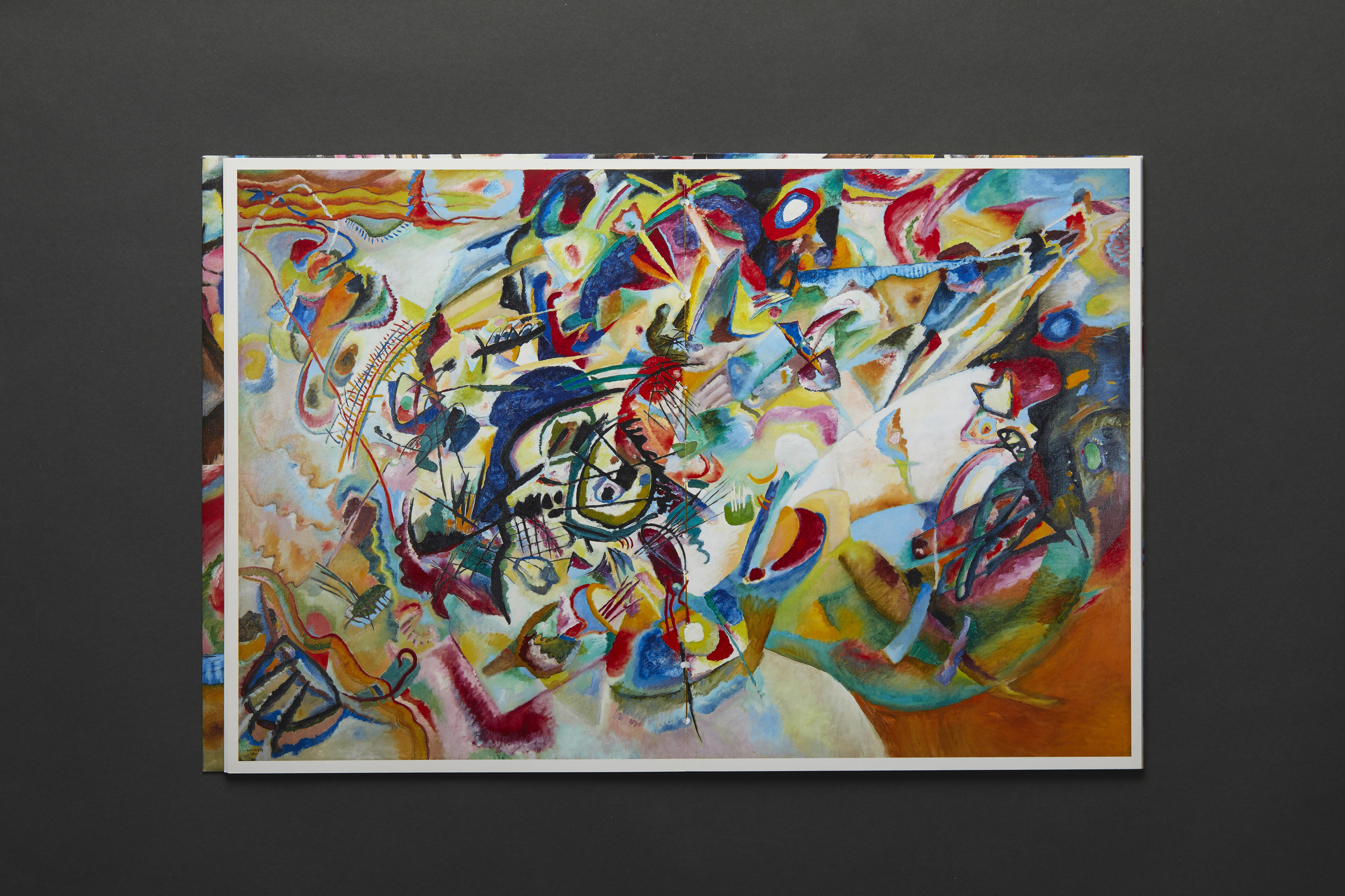
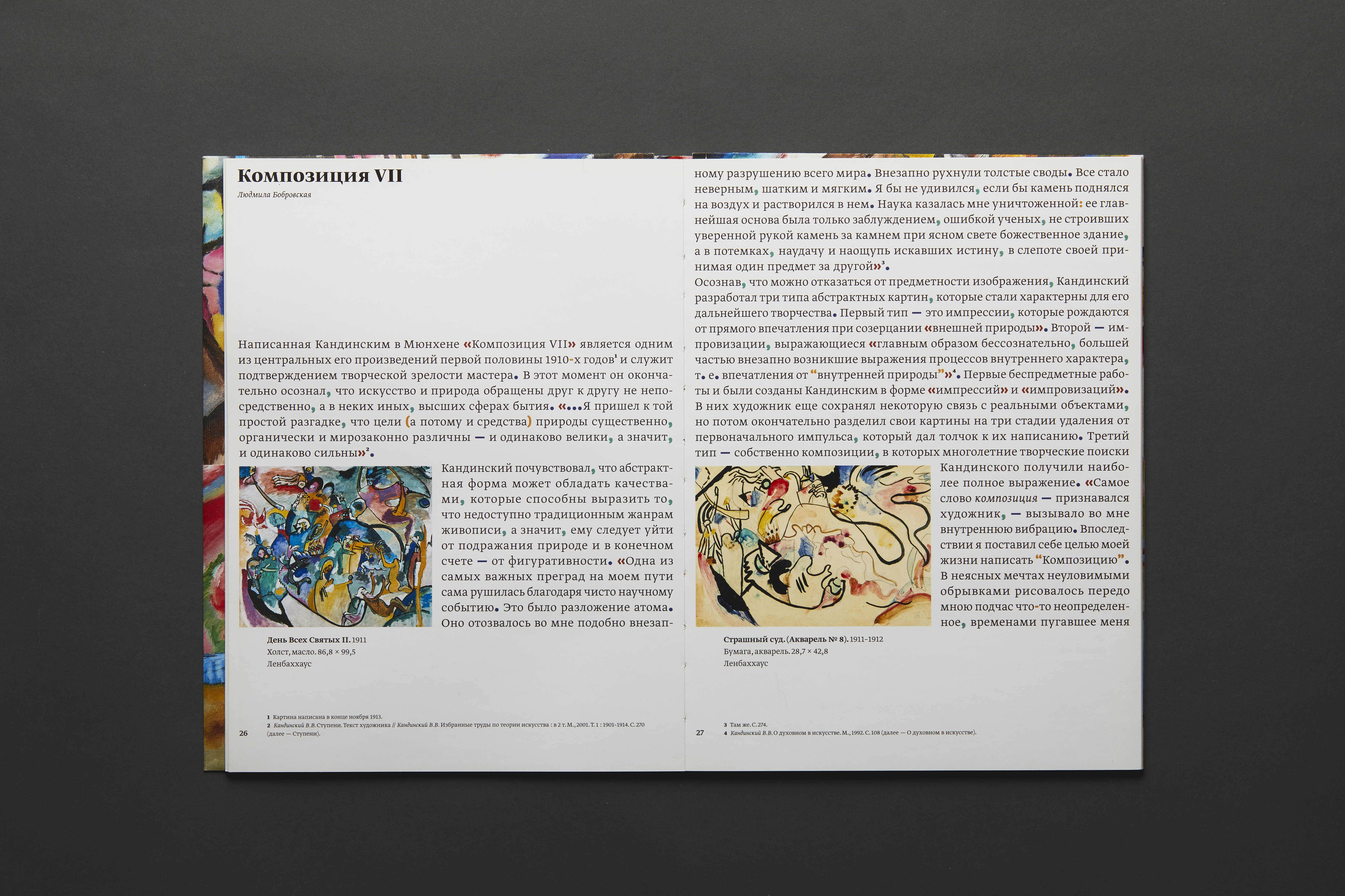
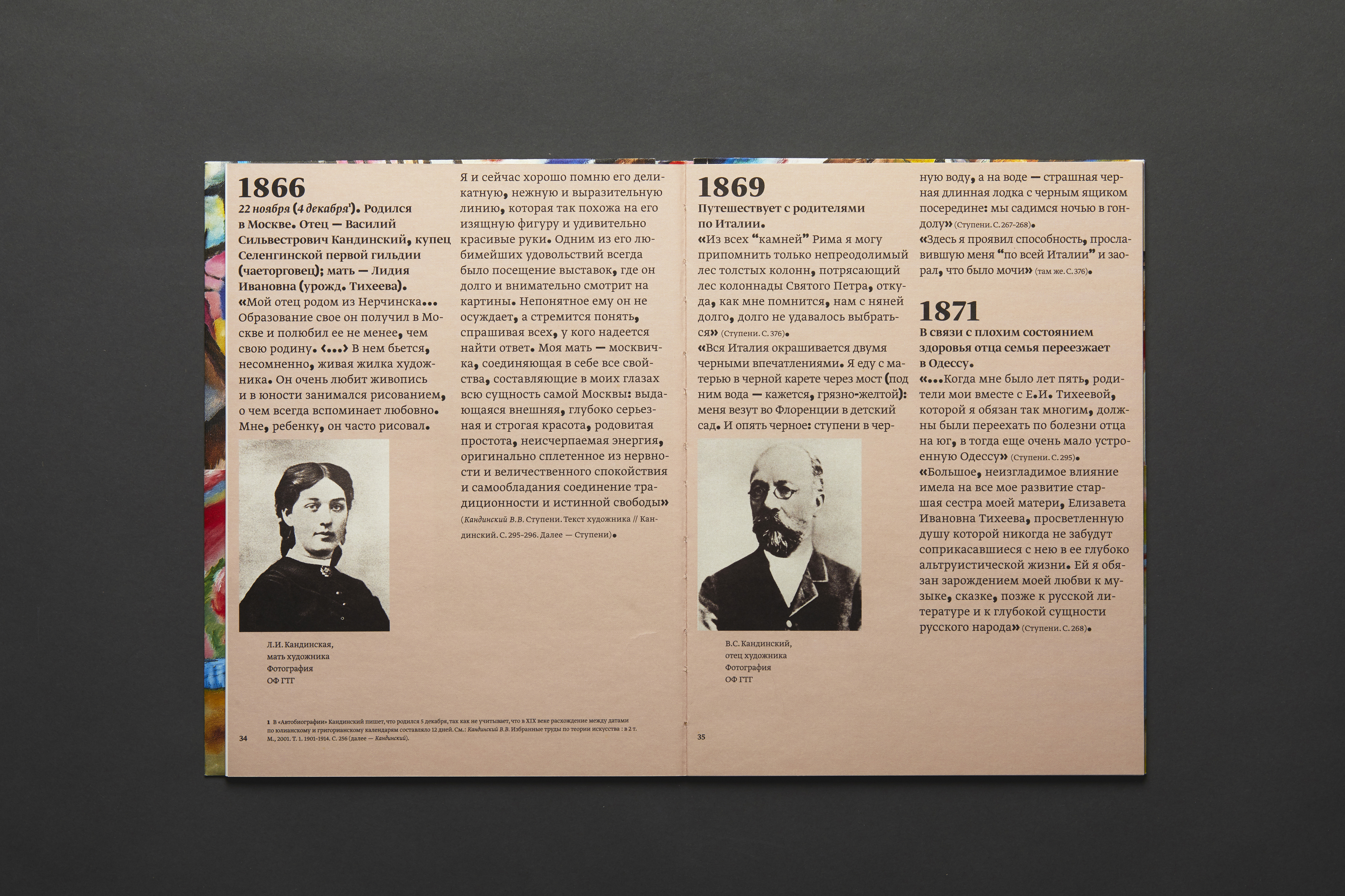
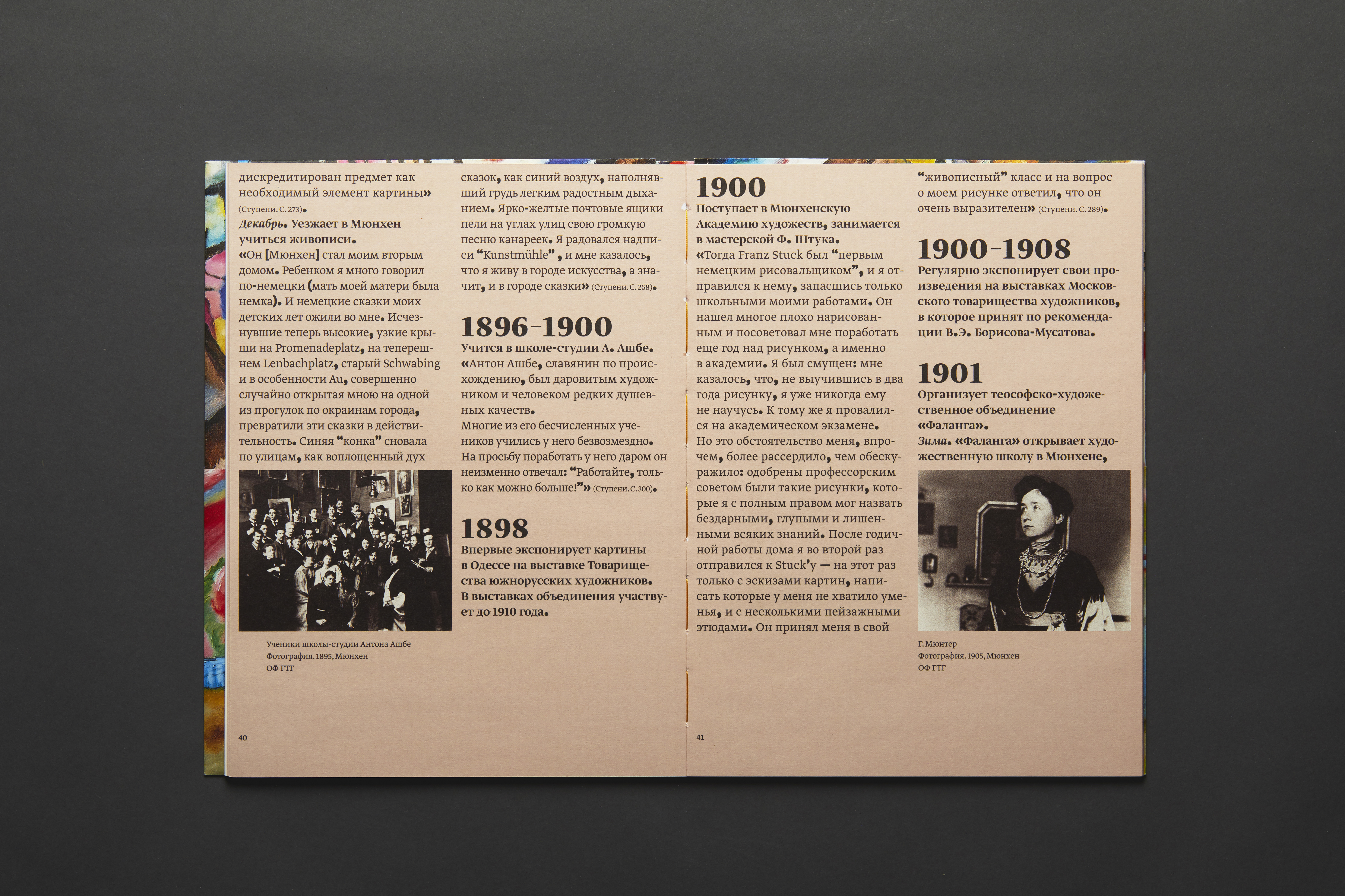
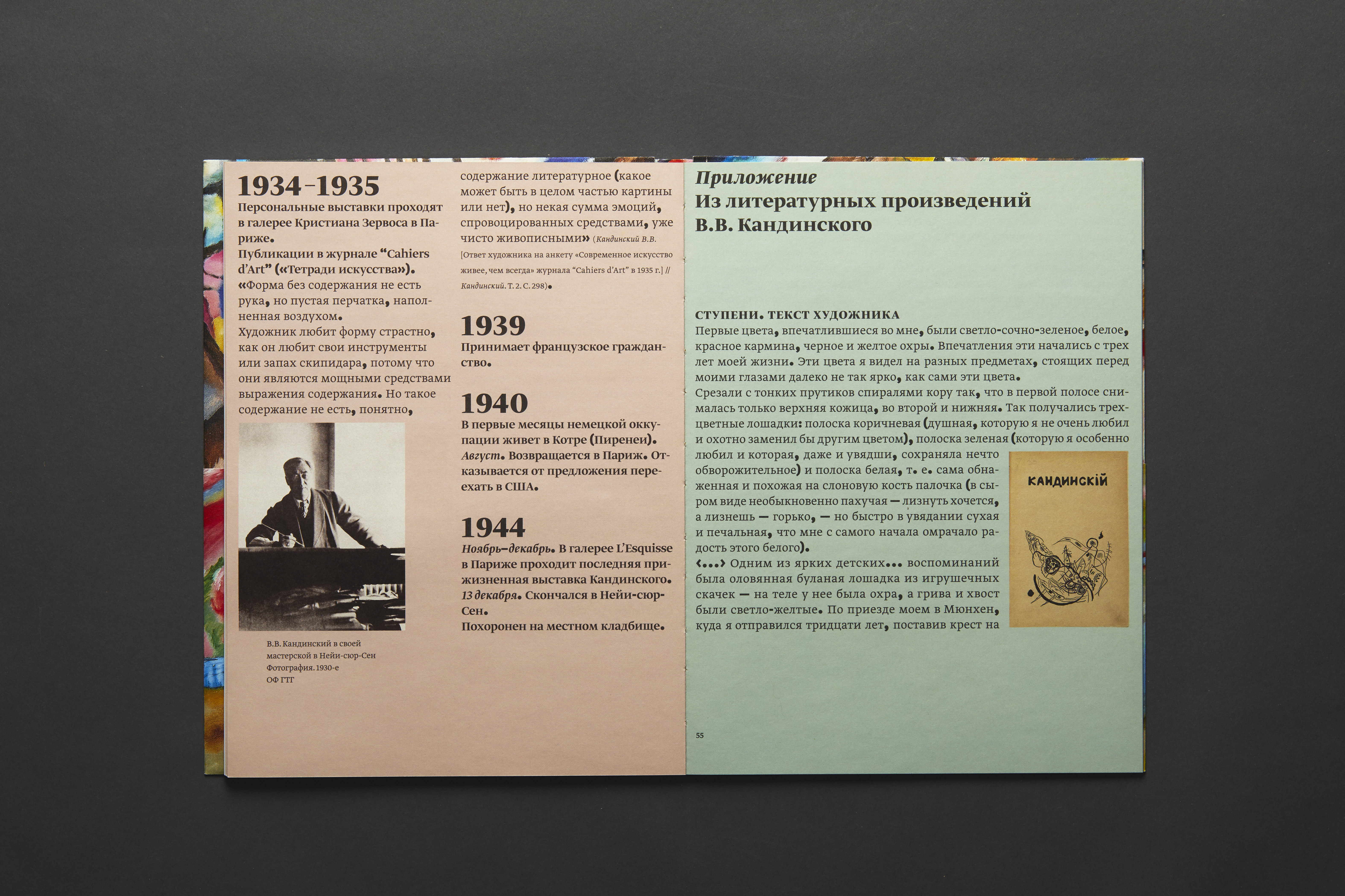

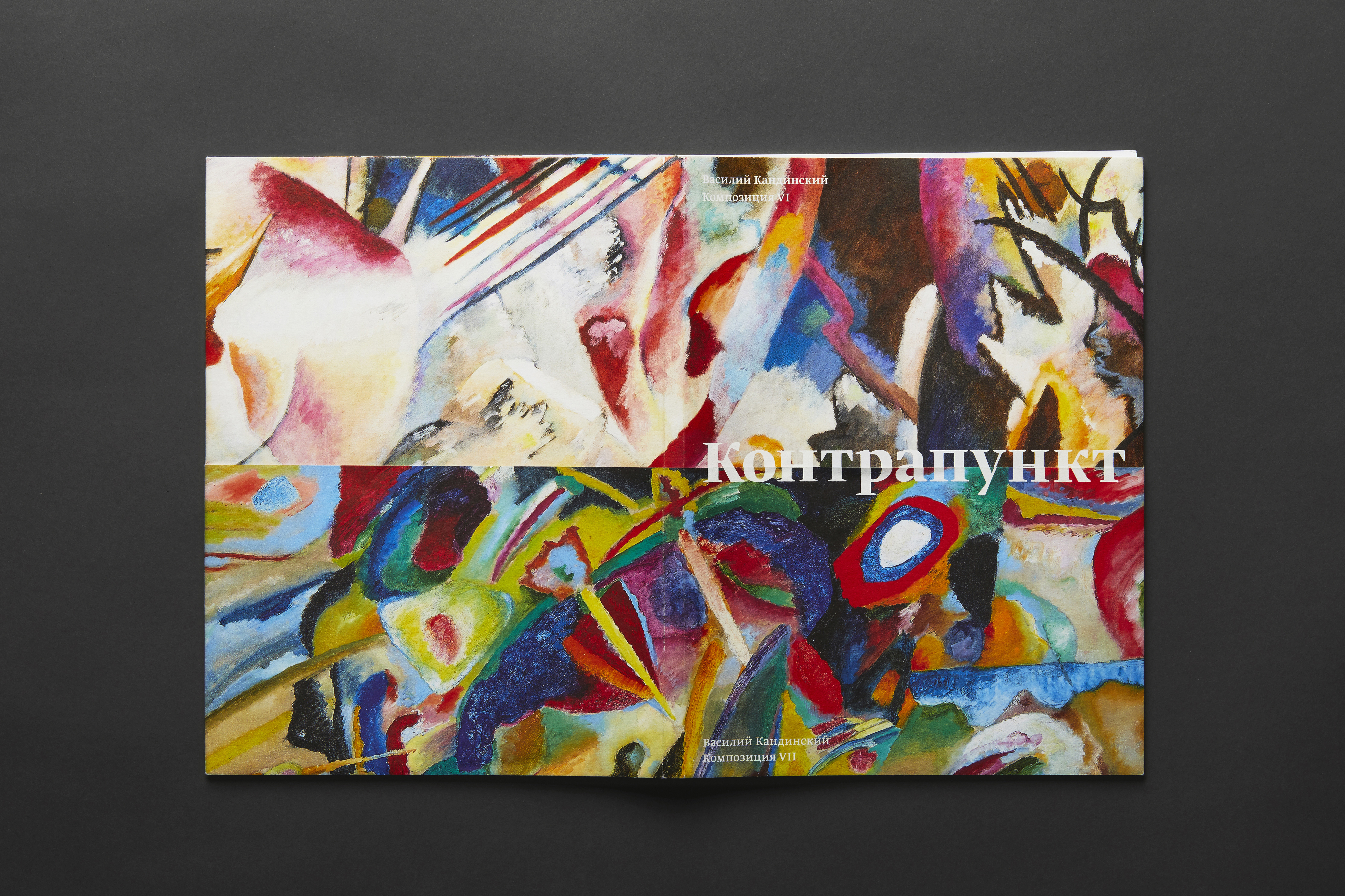
2016
198 × 265 mm
Paper: HannoArt Bulk 150 g/m², Pergraphica 130 g/m²
72 pages
ISBN: 978–5-89580–127–7
Made in ABCdesign
To mark the 150th anniversary of Kandinsky’s birth, the Tretyakov Gallery has collaborated with the Hermitage Museum to bring two of Vasily Kandinsky's most iconic works Composition VI and Composition VII together in Moscow.
Abstract by nature, music was a key driving force behind Kandinsky’s search for pure forms and colors. Likening painting to composing music, he often used musical terms, such as impressions and compositions to identify his works. A crucial concept in the artist’s system is counterpoint — the art of combining different melodic lines in a musical composition. Borrowing the idea from musical theory, he applied it to painting, describing it as superior way of organizing an artwork.
“Counterpoint as we know is comparison or contrast of two melodies. But for Kandinsky this is comparison or contrast of color patterns, of color and form. In some cases, it can be polyphonic compositions, in others it can be rougher cacophonic collisions,” said Lyudmila Bobrovskaya, the curator of the exhibition. ©
198 × 265 mm
Paper: HannoArt Bulk 150 g/m², Pergraphica 130 g/m²
72 pages
ISBN: 978–5-89580–127–7
Made in ABCdesign
To mark the 150th anniversary of Kandinsky’s birth, the Tretyakov Gallery has collaborated with the Hermitage Museum to bring two of Vasily Kandinsky's most iconic works Composition VI and Composition VII together in Moscow.
Abstract by nature, music was a key driving force behind Kandinsky’s search for pure forms and colors. Likening painting to composing music, he often used musical terms, such as impressions and compositions to identify his works. A crucial concept in the artist’s system is counterpoint — the art of combining different melodic lines in a musical composition. Borrowing the idea from musical theory, he applied it to painting, describing it as superior way of organizing an artwork.
“Counterpoint as we know is comparison or contrast of two melodies. But for Kandinsky this is comparison or contrast of color patterns, of color and form. In some cases, it can be polyphonic compositions, in others it can be rougher cacophonic collisions,” said Lyudmila Bobrovskaya, the curator of the exhibition. ©
“Painting is a rumbling battle of worlds, which is meant to create a new world called a work of art through this battle. Technically, all the works emerge the same as spacedid – through catastrophes, which are like chaotic roars of orchestras, uniting into a symphony at the end. Creating a work is creating a world.” (W. Kandinsky, “Steps”)
АМО ЗИЛ. 100 лет
AMO ZIL. 100 year anniversary
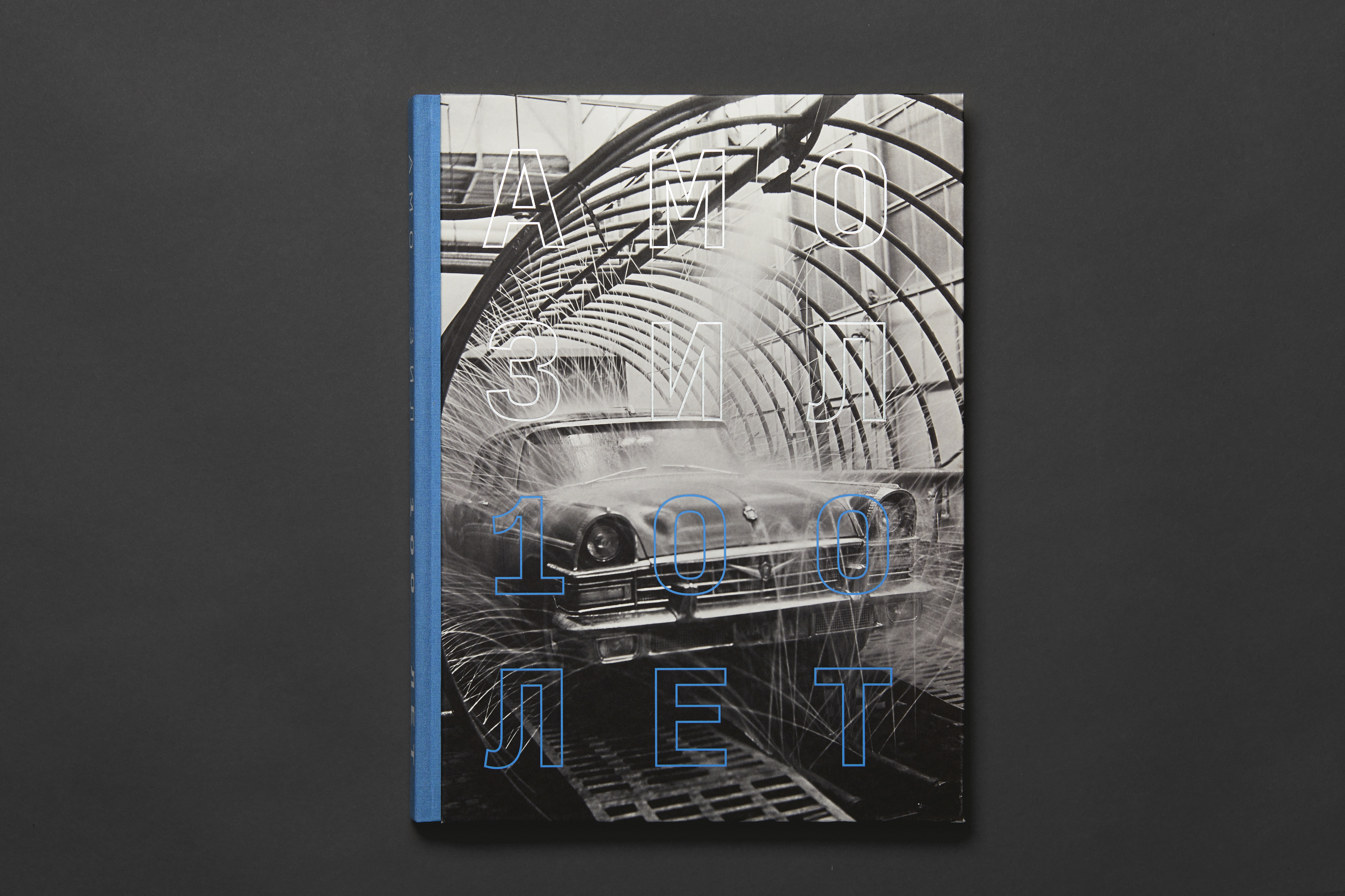
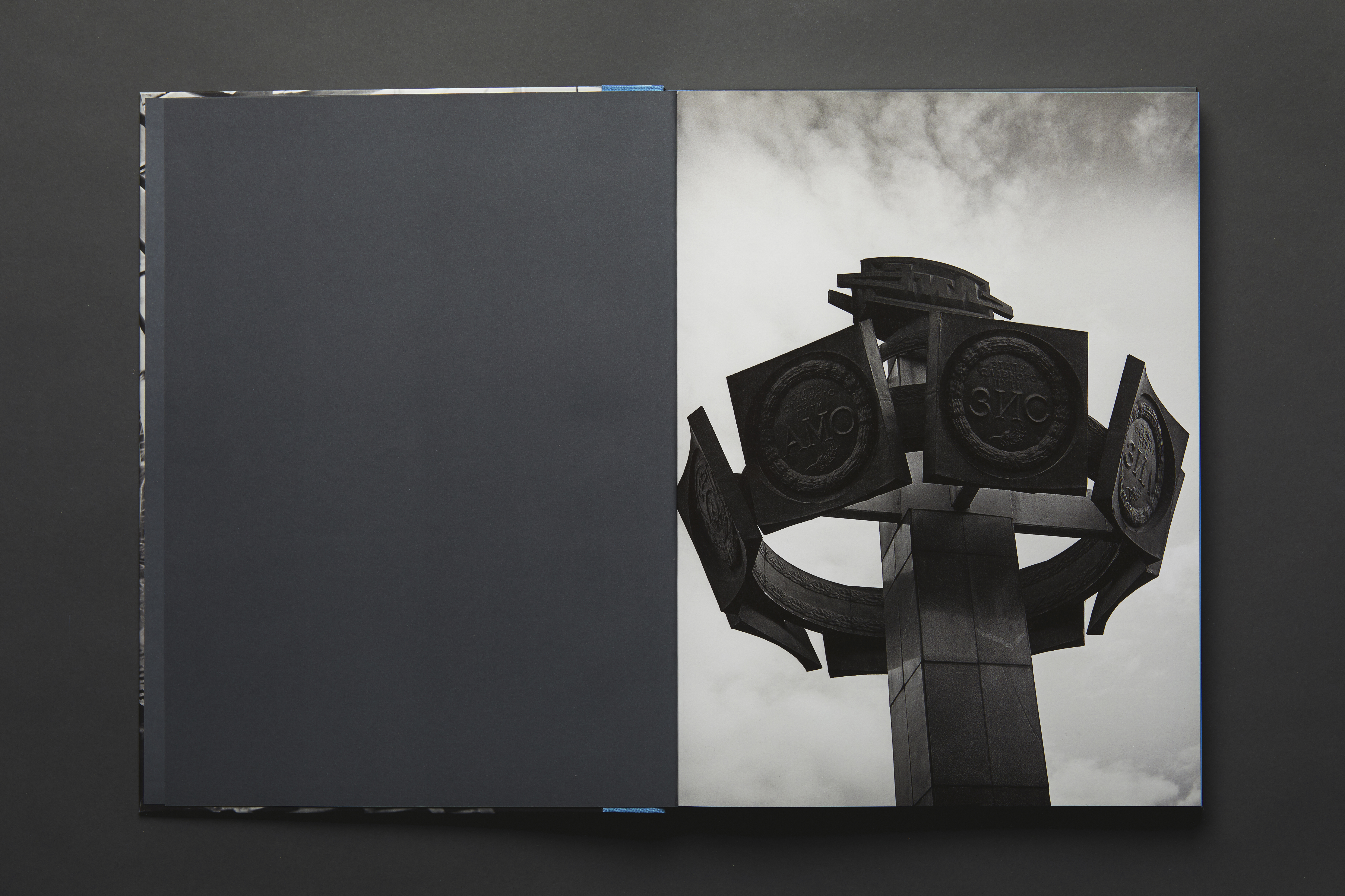
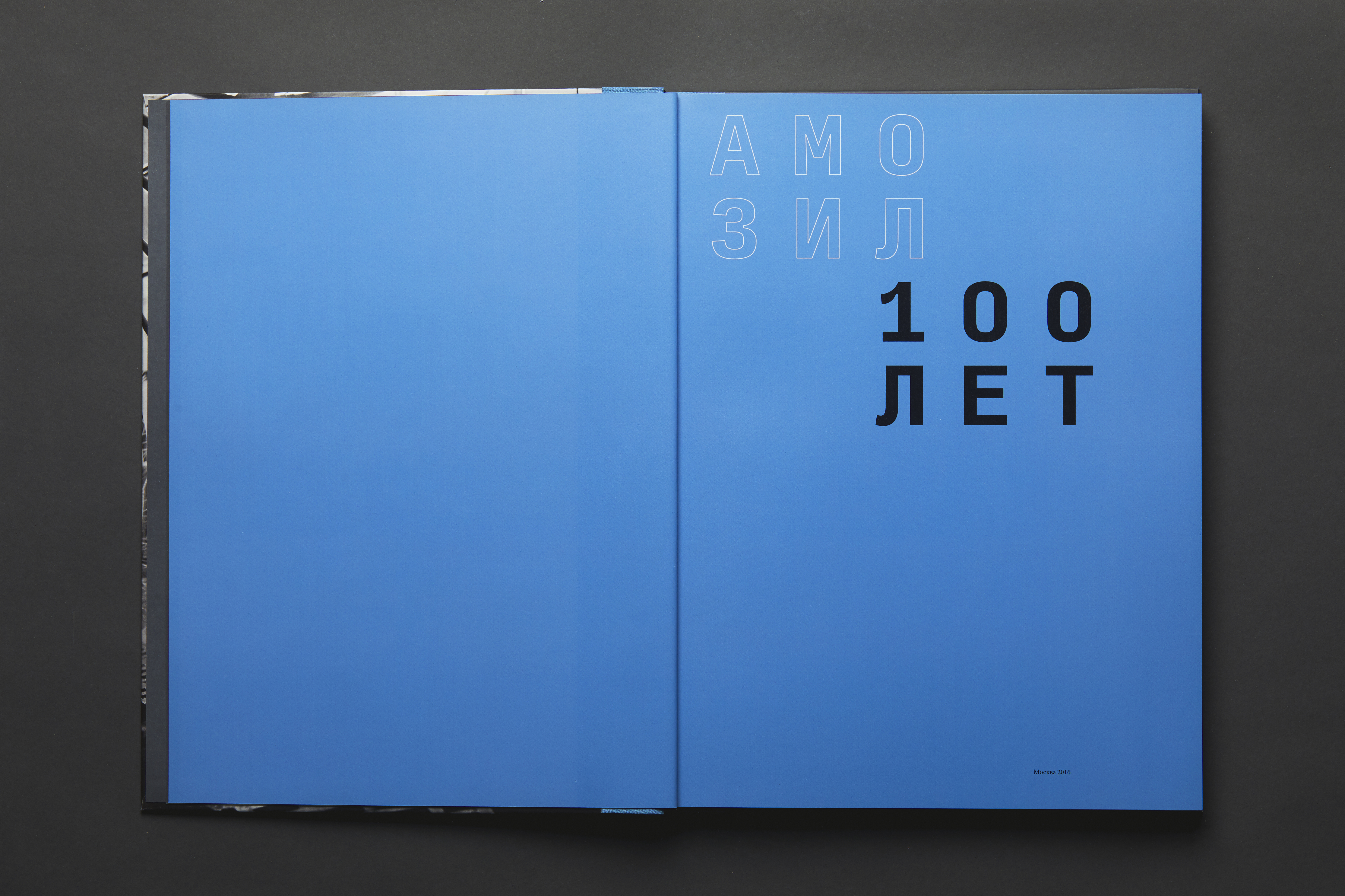
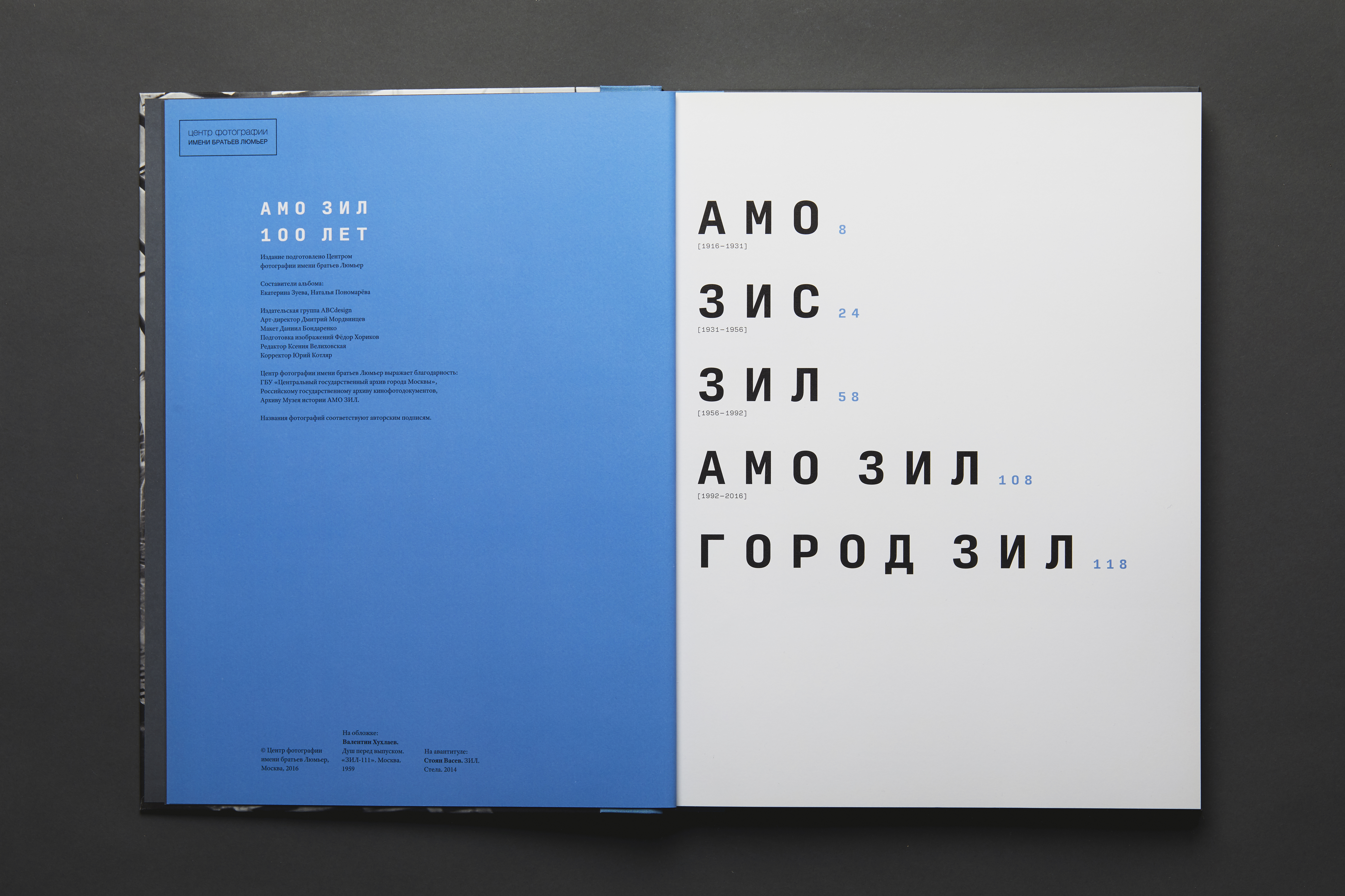
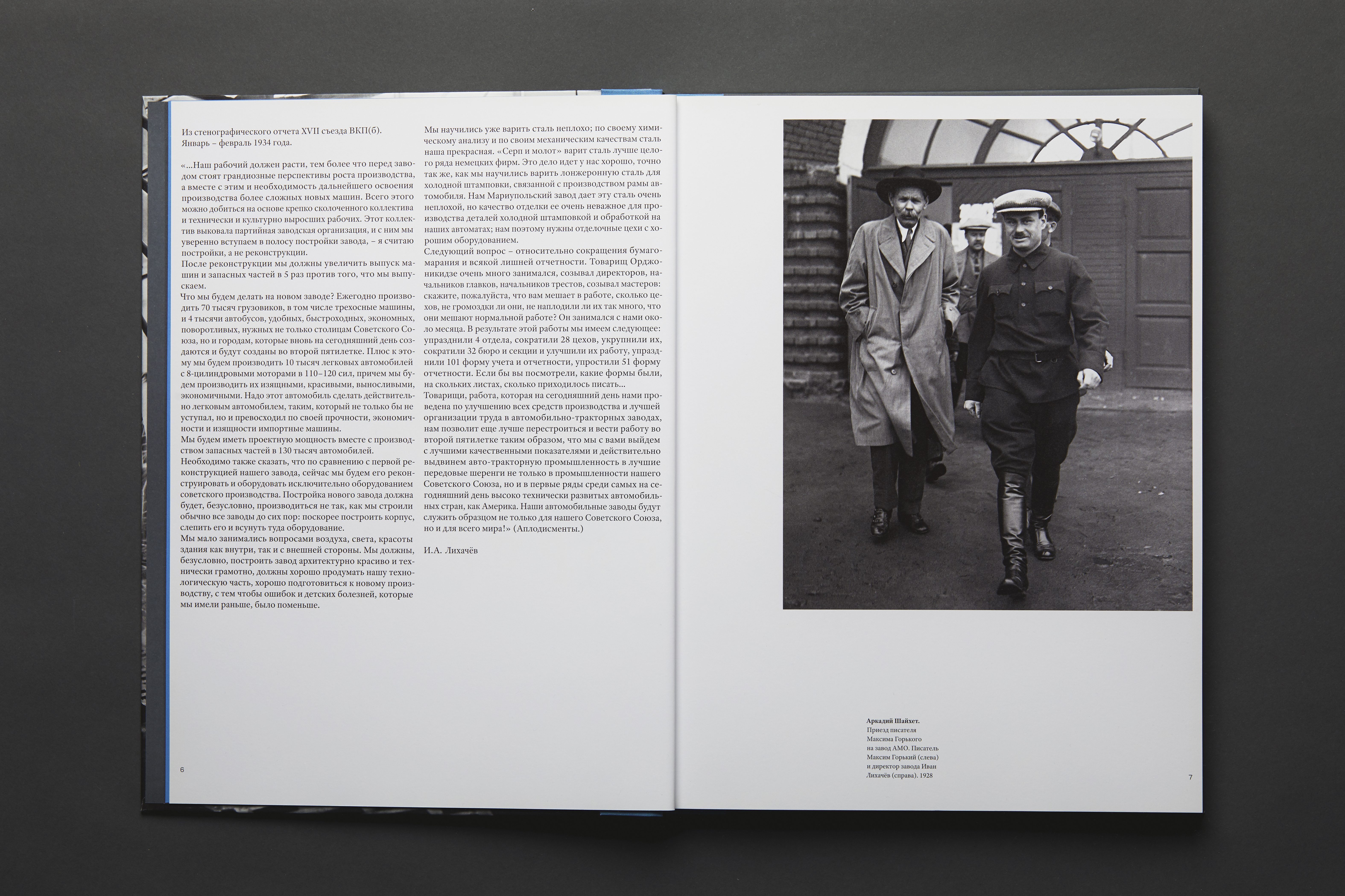
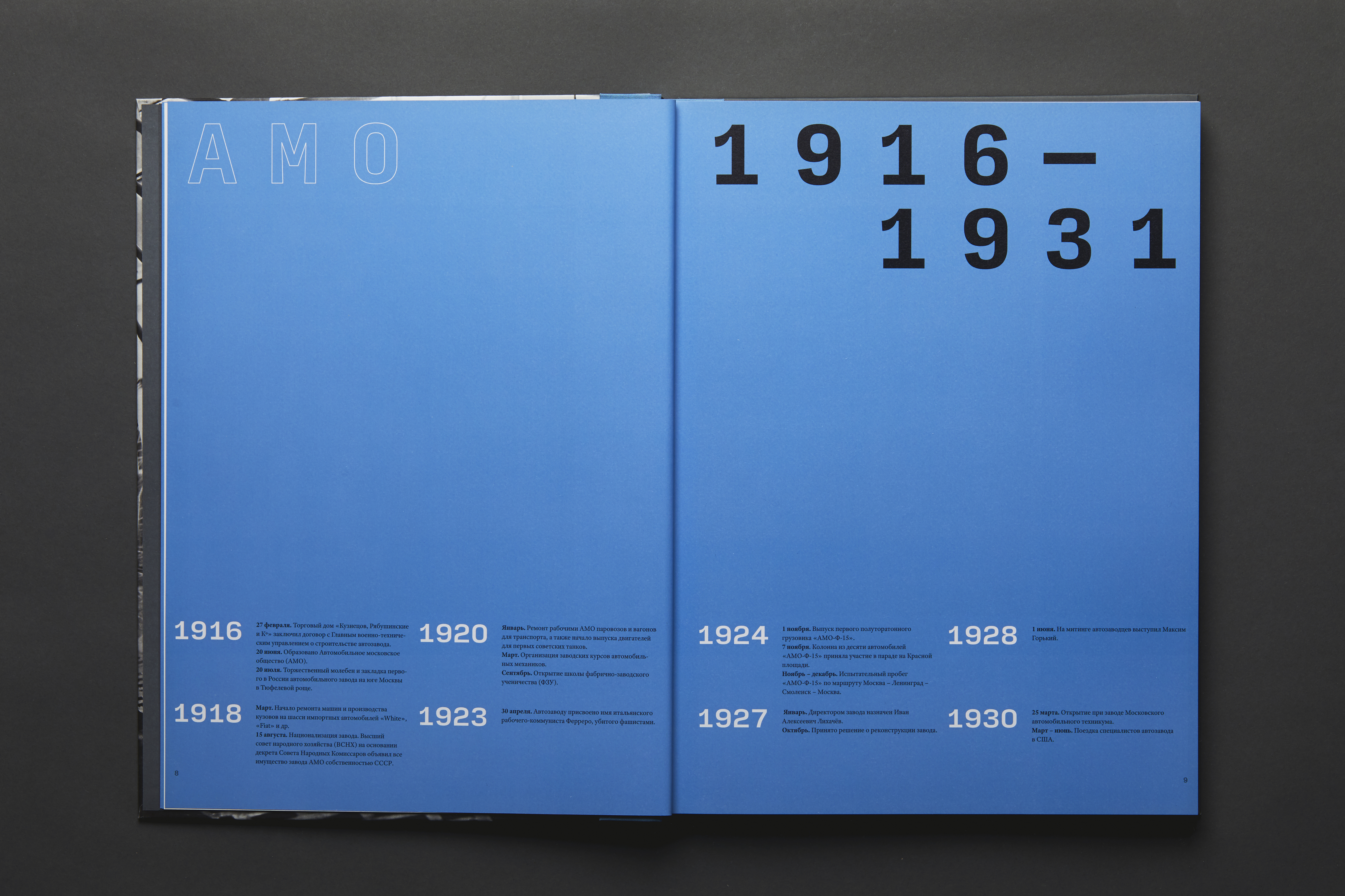

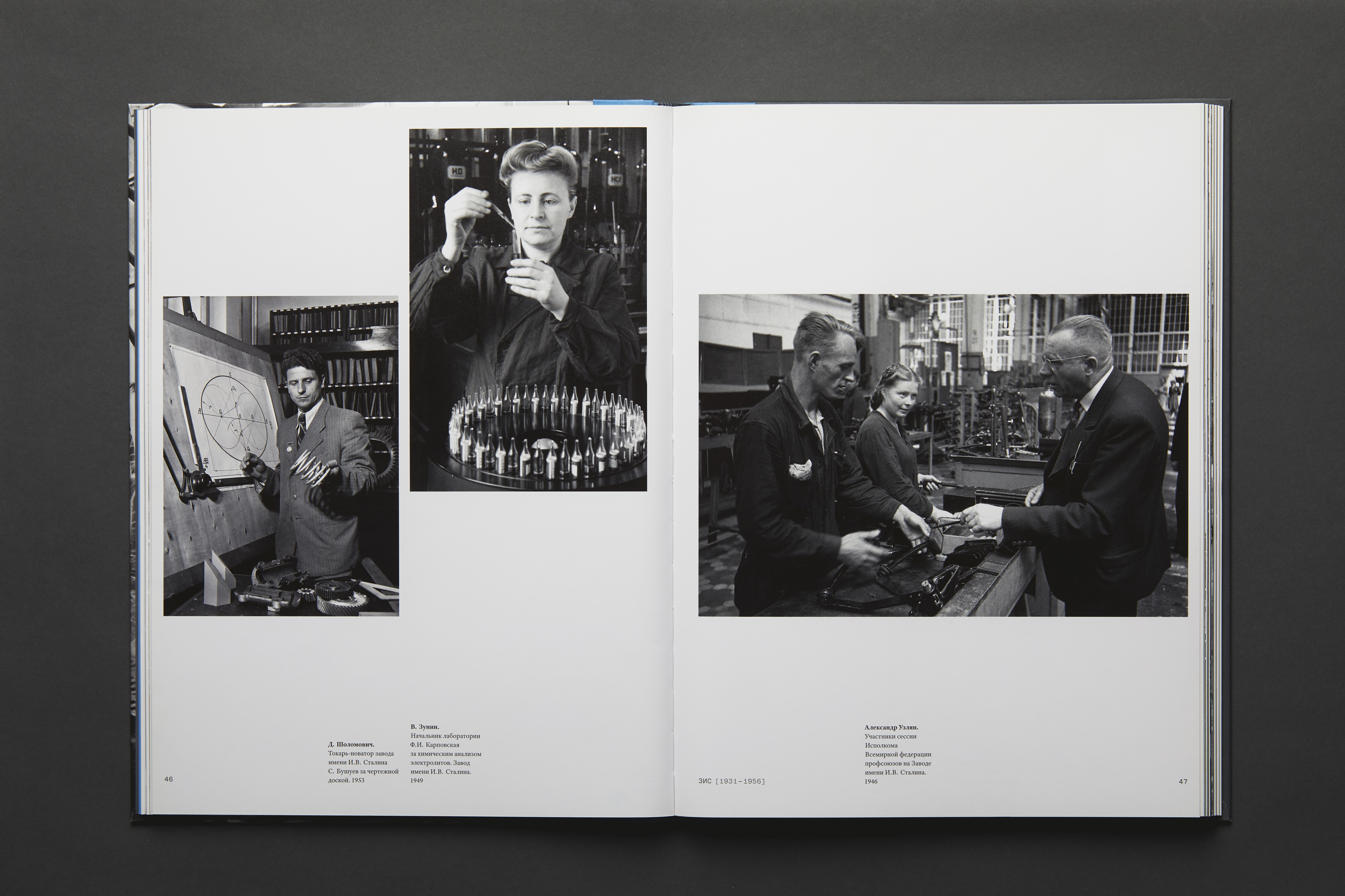
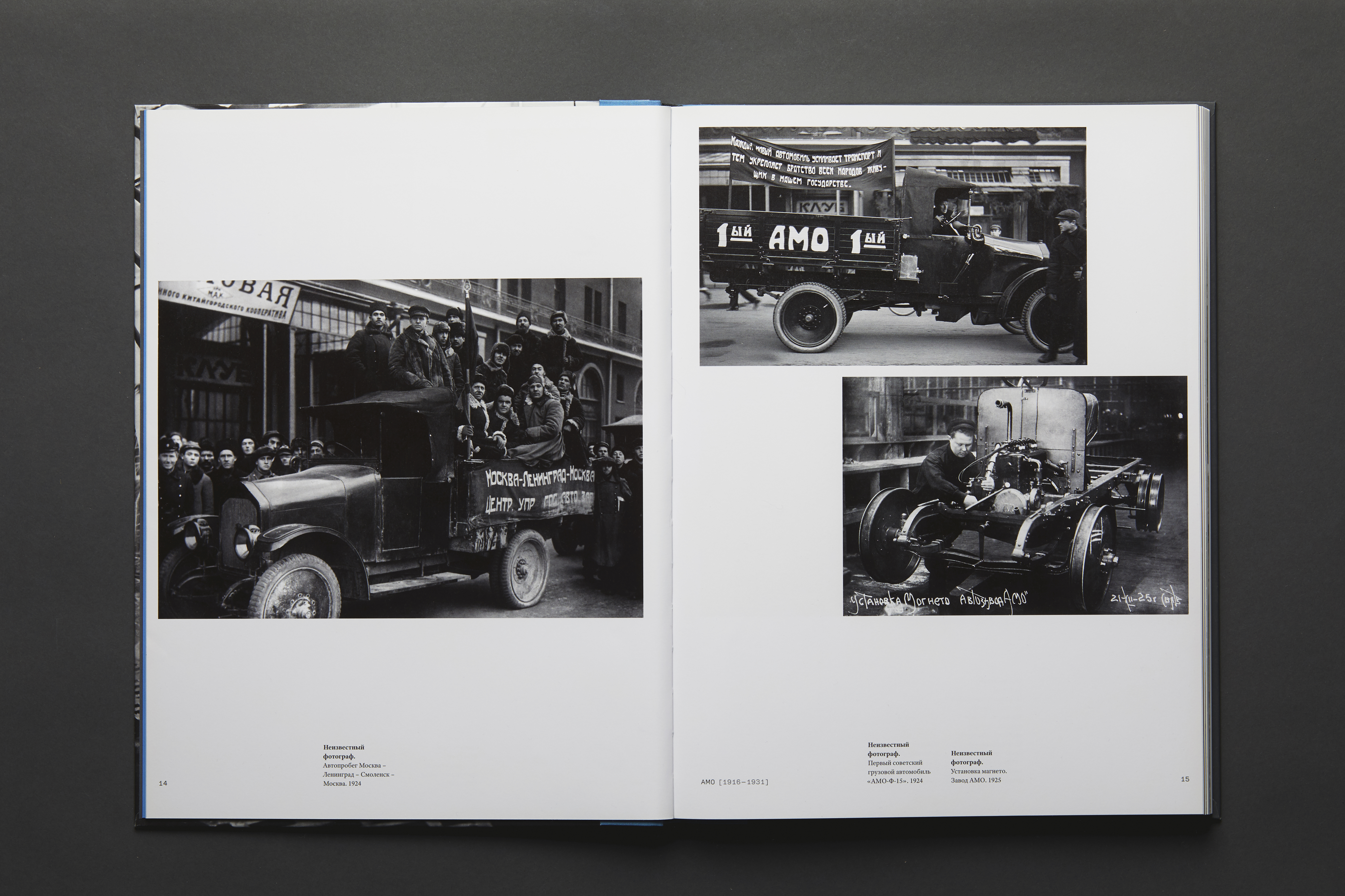
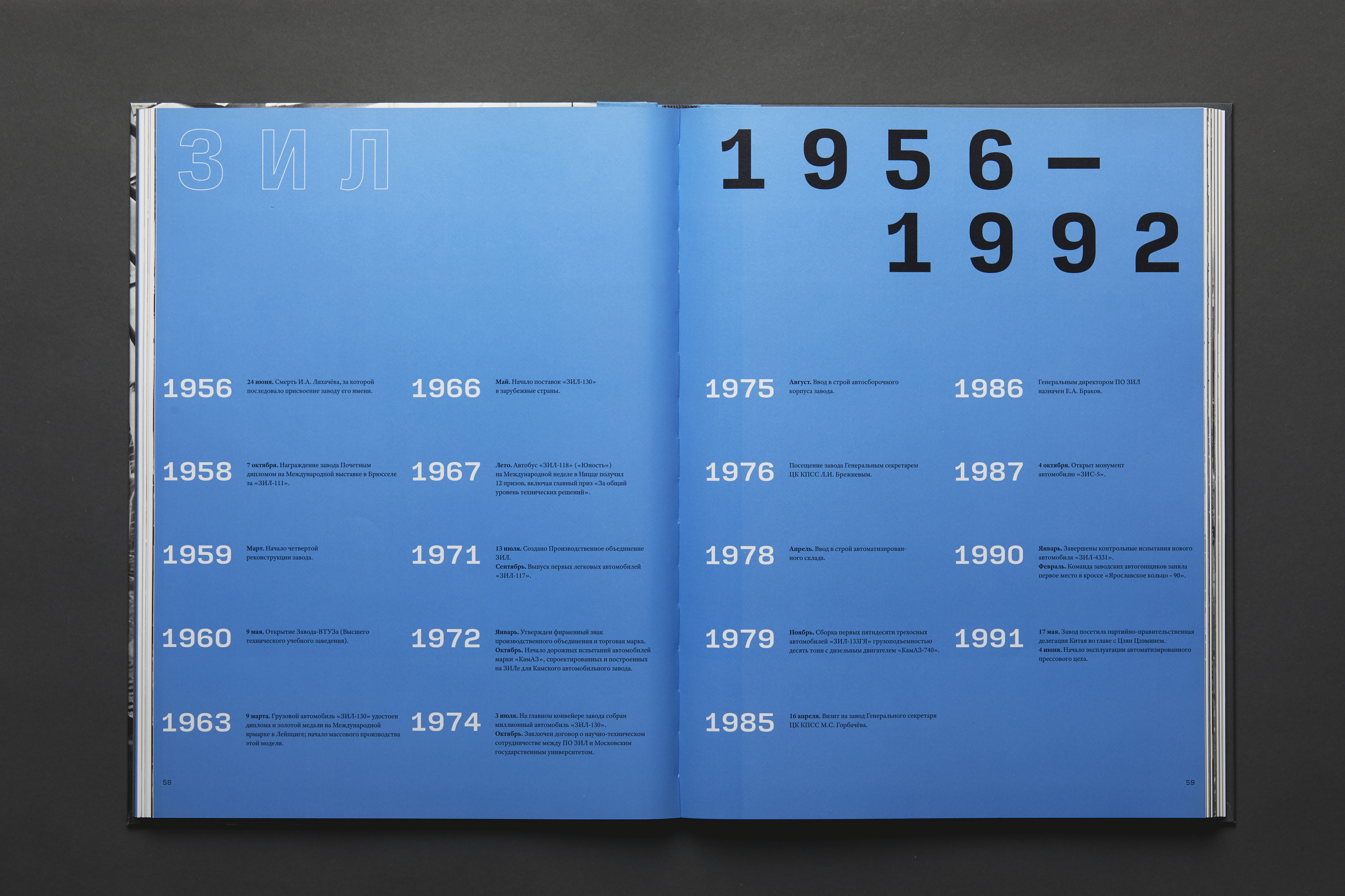
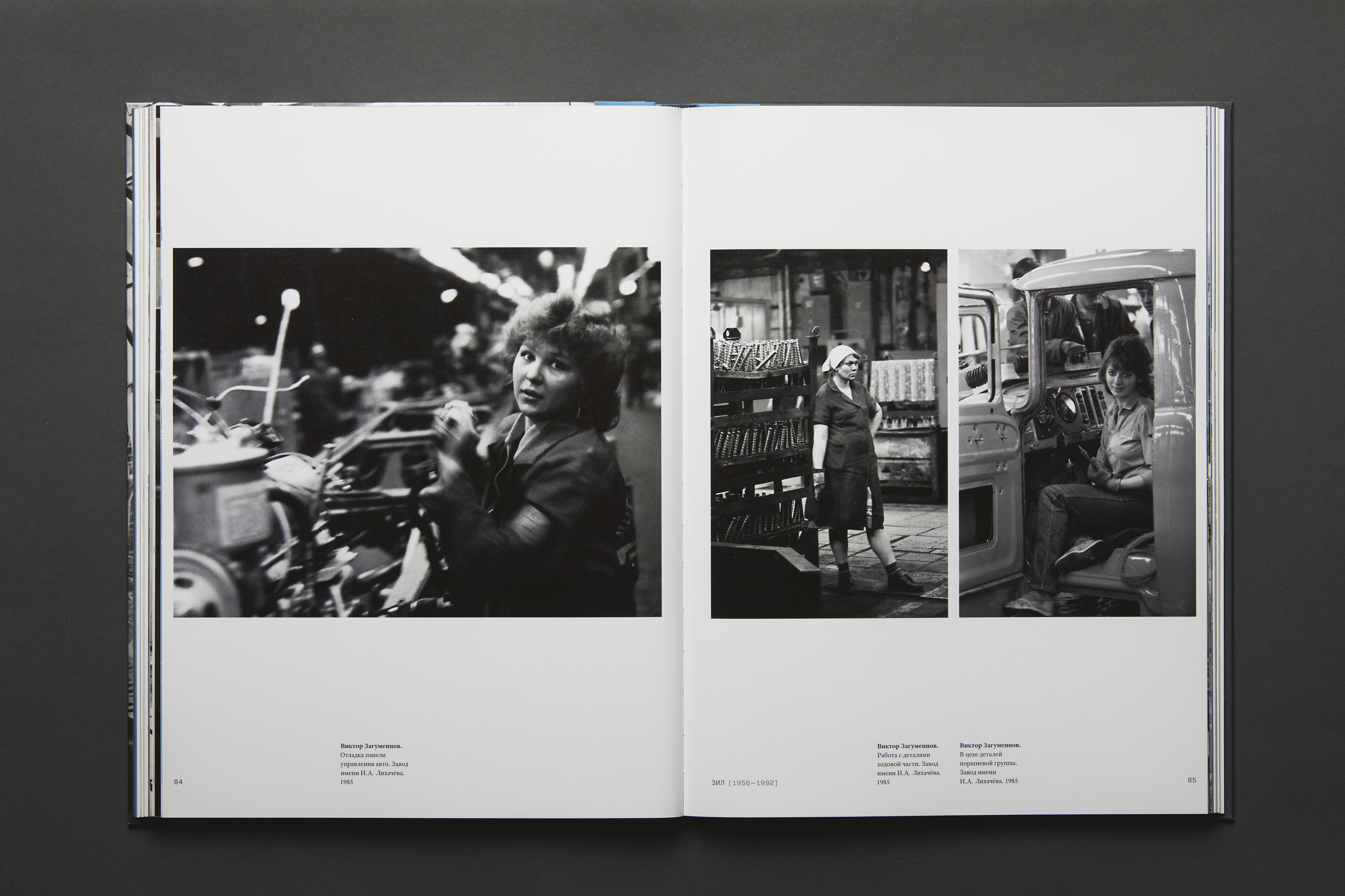
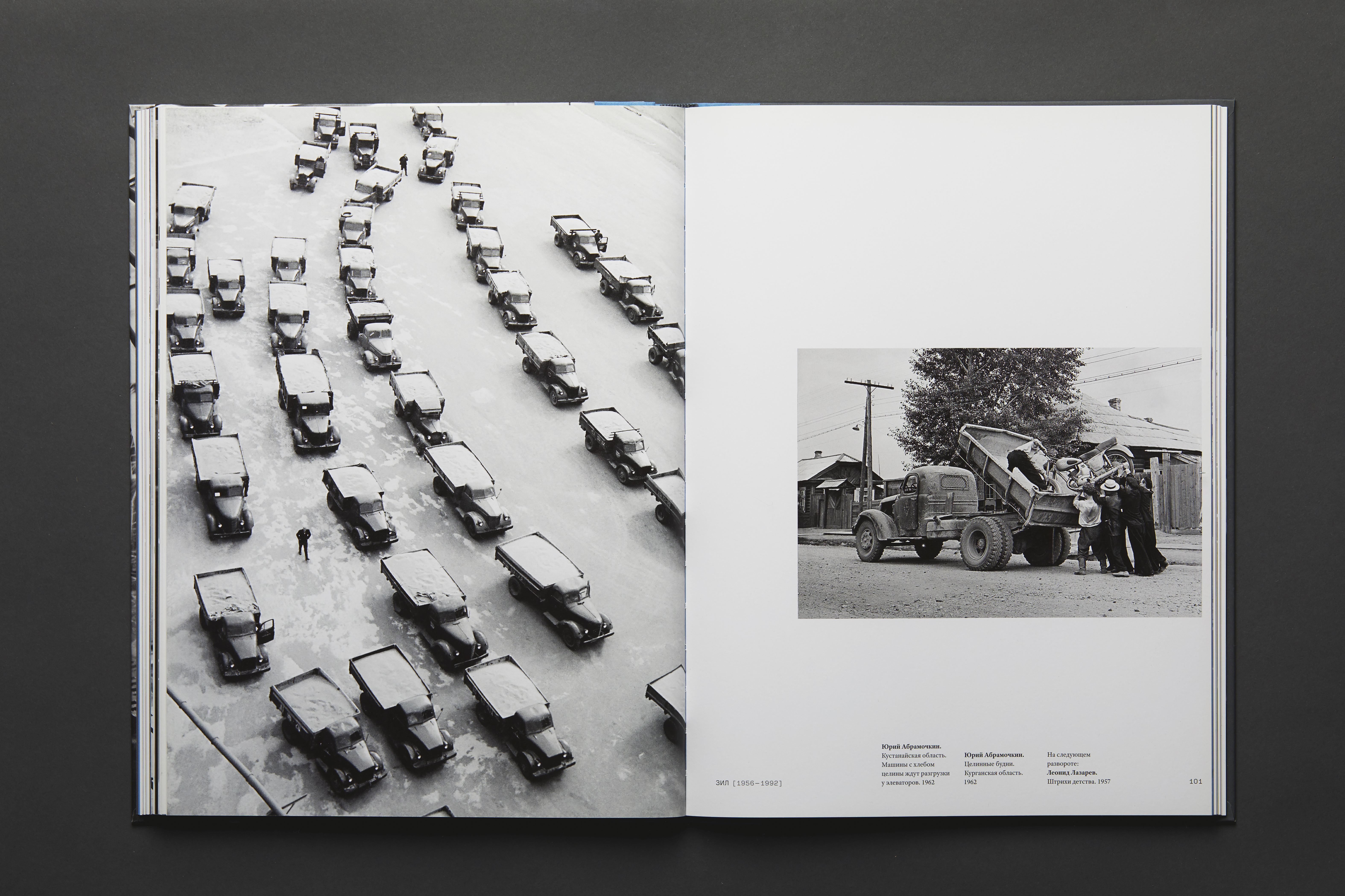
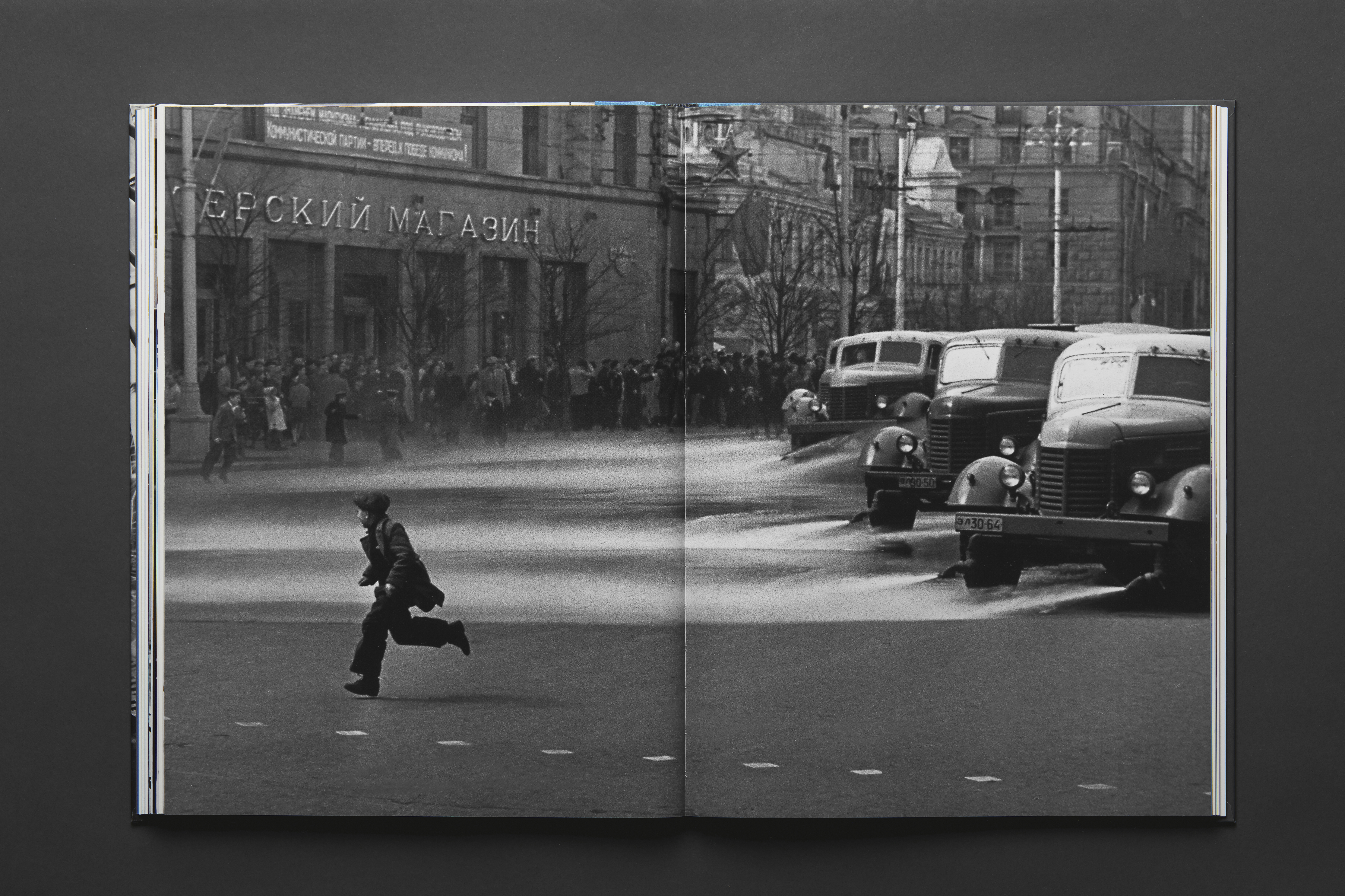
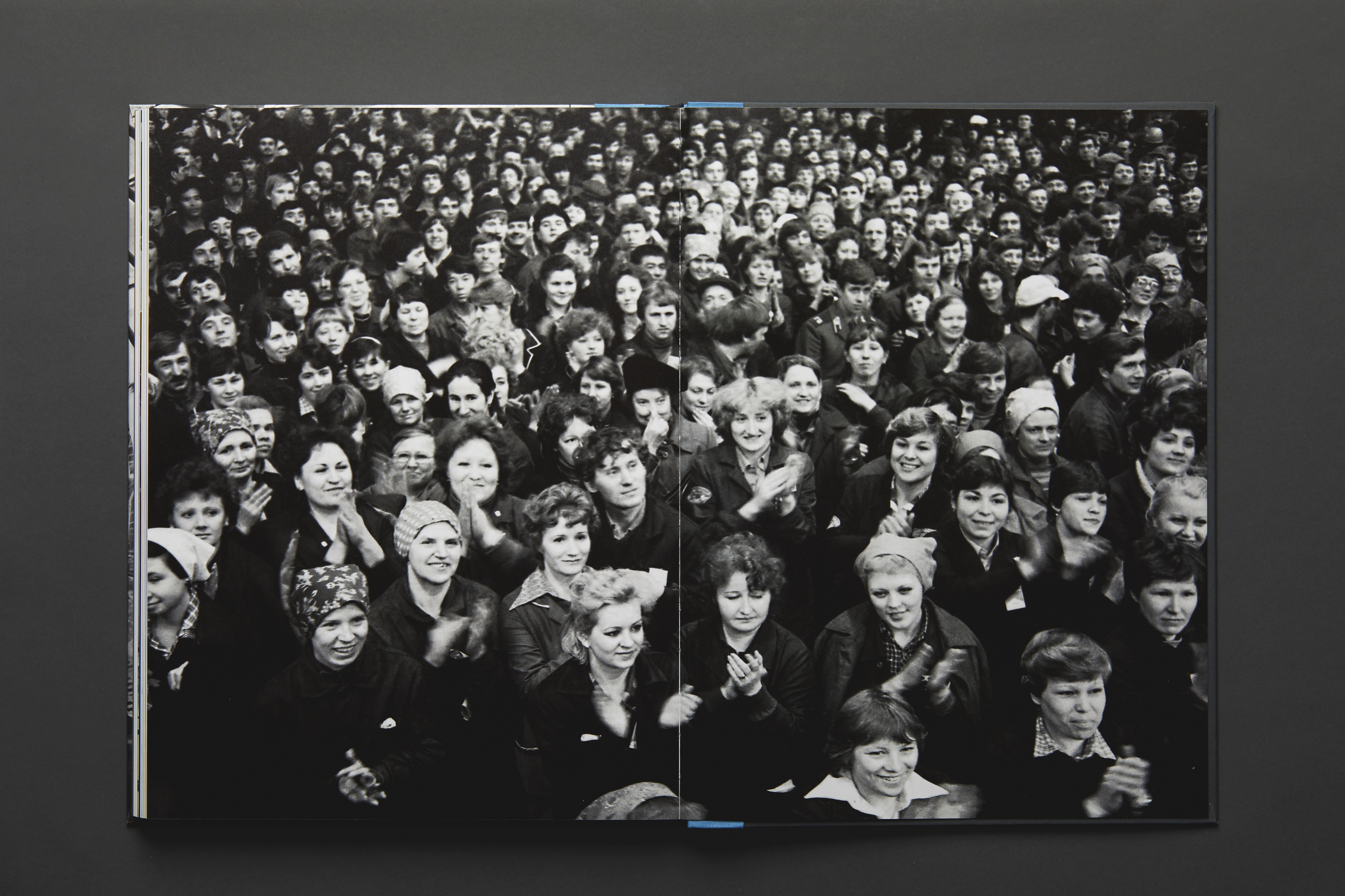
2016
240 × 320 mm
Paper: Arctic Volume 150 g/m²
160 pages
ISBN: 978-5-4330-0048-3
Made in ABCdesign
The Lumiere Brothers Center for Photography presents a new edition of AMO ZIL, 100 Years dedicated to the 100th anniversary of one of the country's most famous factories, the IA Likhachev Plant. The plant, founded in 1916, was not only the center of the automobile industry in the country, but a factory-city, a full-fledged city unit with its territorial and architectural features, infrastructure, history and traditions. The album, building the chronological line AMO — ZIL — ZIS — AMO ZIL, traces the history of the plant from the very first years of its existence, reflected in the works of famous photographers such as A. Rodchenko, A. Shaikhet, E. Evzerikhin, M. Prehner, Y. Khalip, V. Khukhlaev, Yu. Abramochkin, L. Sherstennikov, etc. ©
240 × 320 mm
Paper: Arctic Volume 150 g/m²
160 pages
ISBN: 978-5-4330-0048-3
Made in ABCdesign
The Lumiere Brothers Center for Photography presents a new edition of AMO ZIL, 100 Years dedicated to the 100th anniversary of one of the country's most famous factories, the IA Likhachev Plant. The plant, founded in 1916, was not only the center of the automobile industry in the country, but a factory-city, a full-fledged city unit with its territorial and architectural features, infrastructure, history and traditions. The album, building the chronological line AMO — ZIL — ZIS — AMO ZIL, traces the history of the plant from the very first years of its existence, reflected in the works of famous photographers such as A. Rodchenko, A. Shaikhet, E. Evzerikhin, M. Prehner, Y. Khalip, V. Khukhlaev, Yu. Abramochkin, L. Sherstennikov, etc. ©
Жан Жене «Альберто Джакометти»
Jean Genet “Alberto Giacometti”
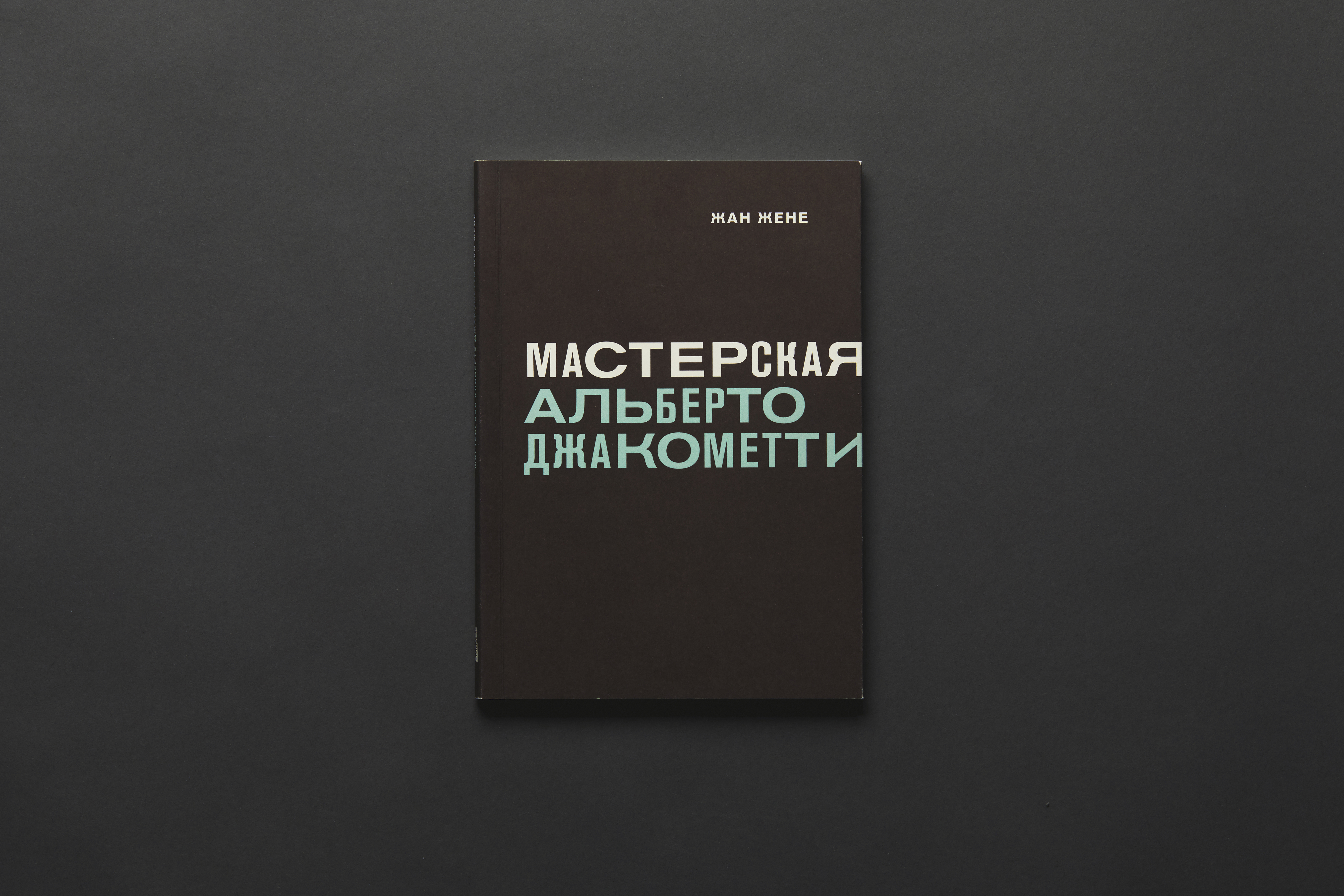
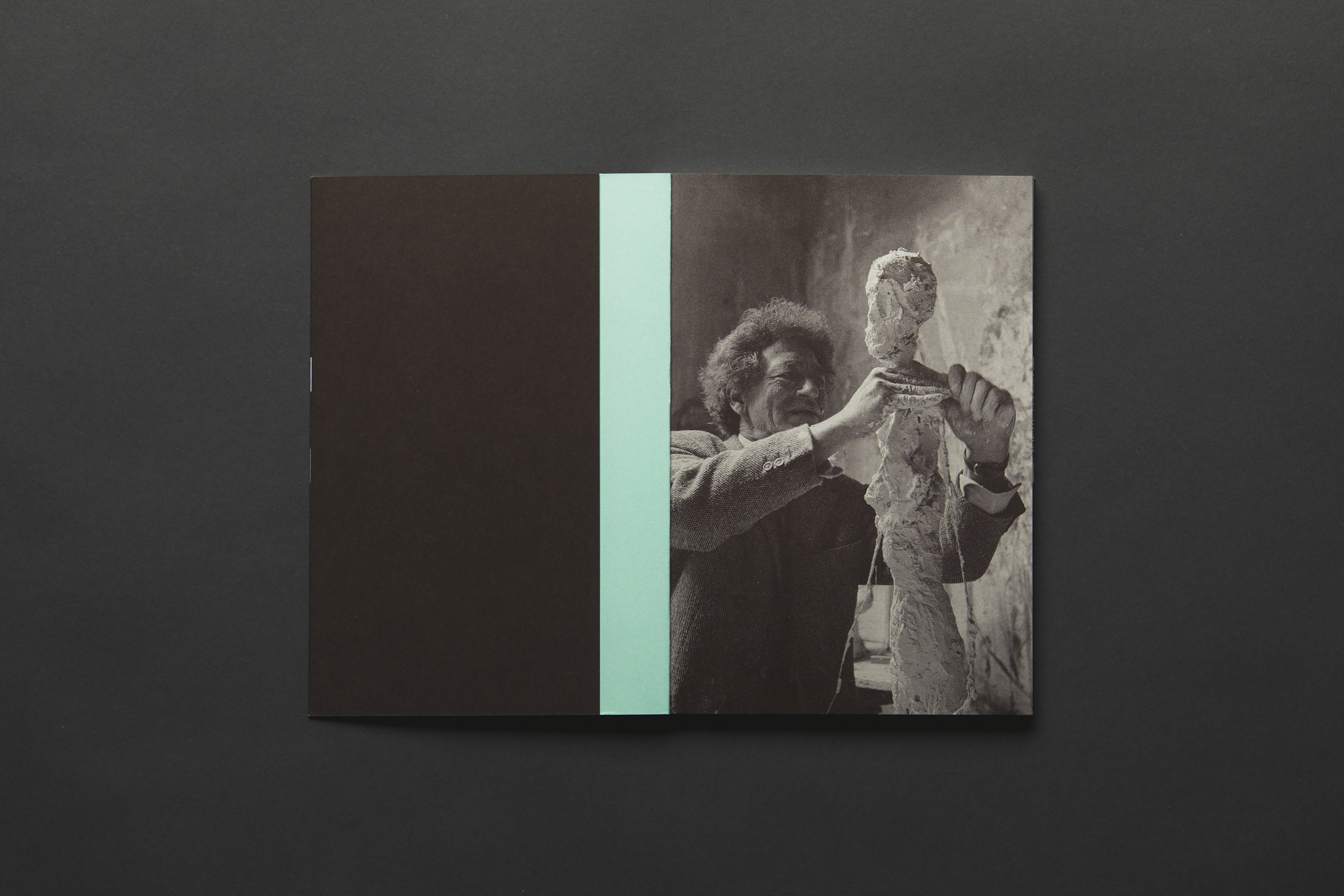
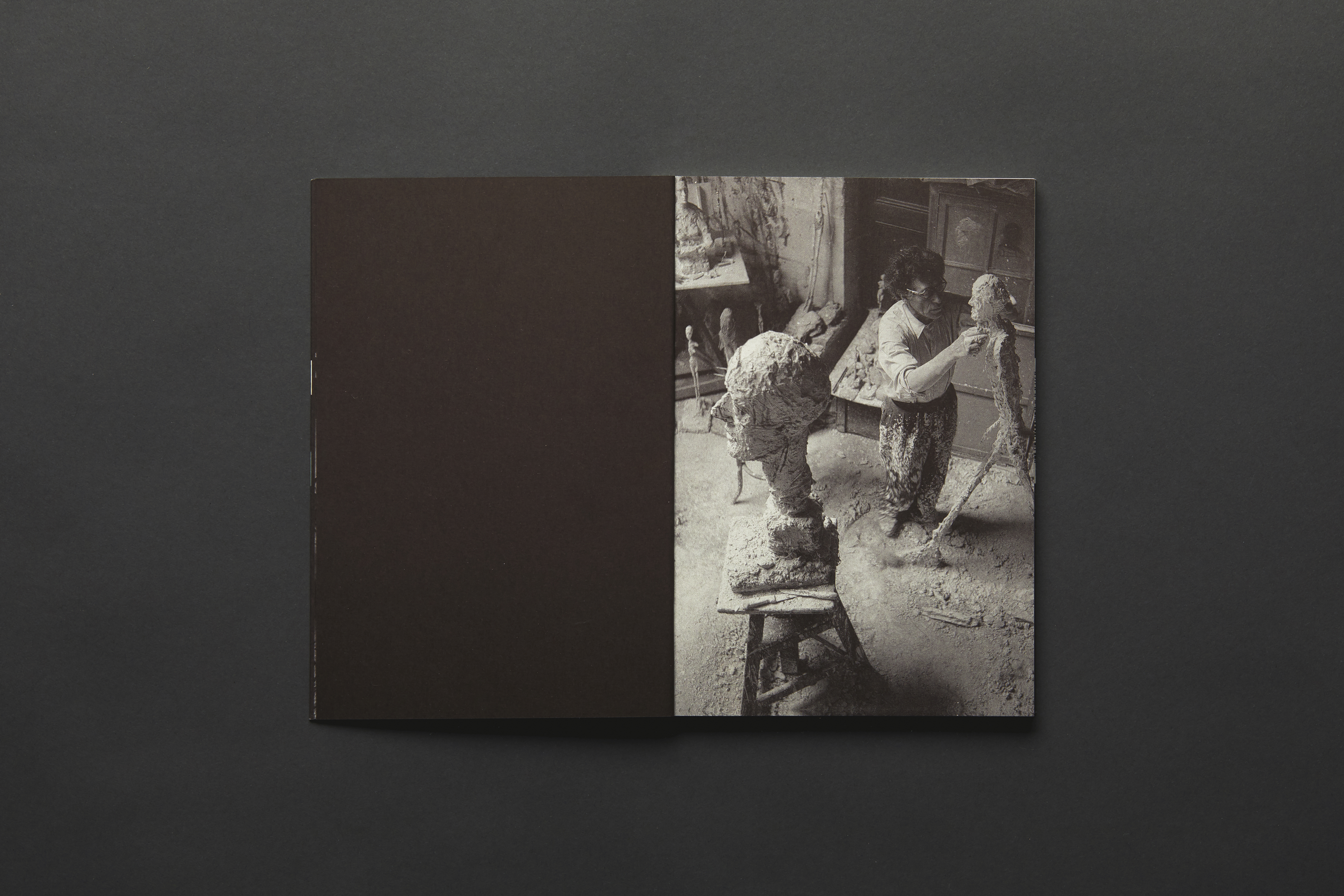
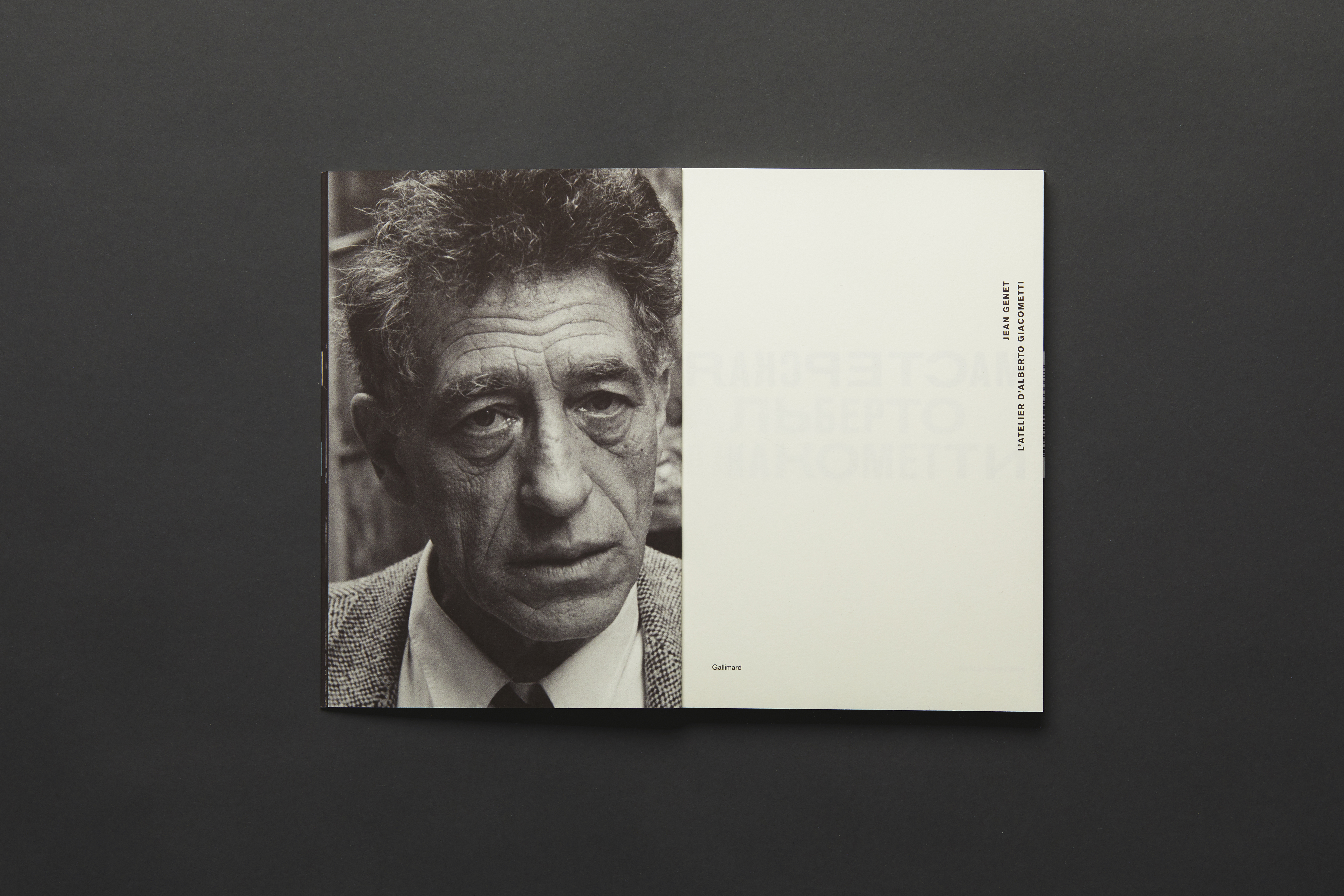
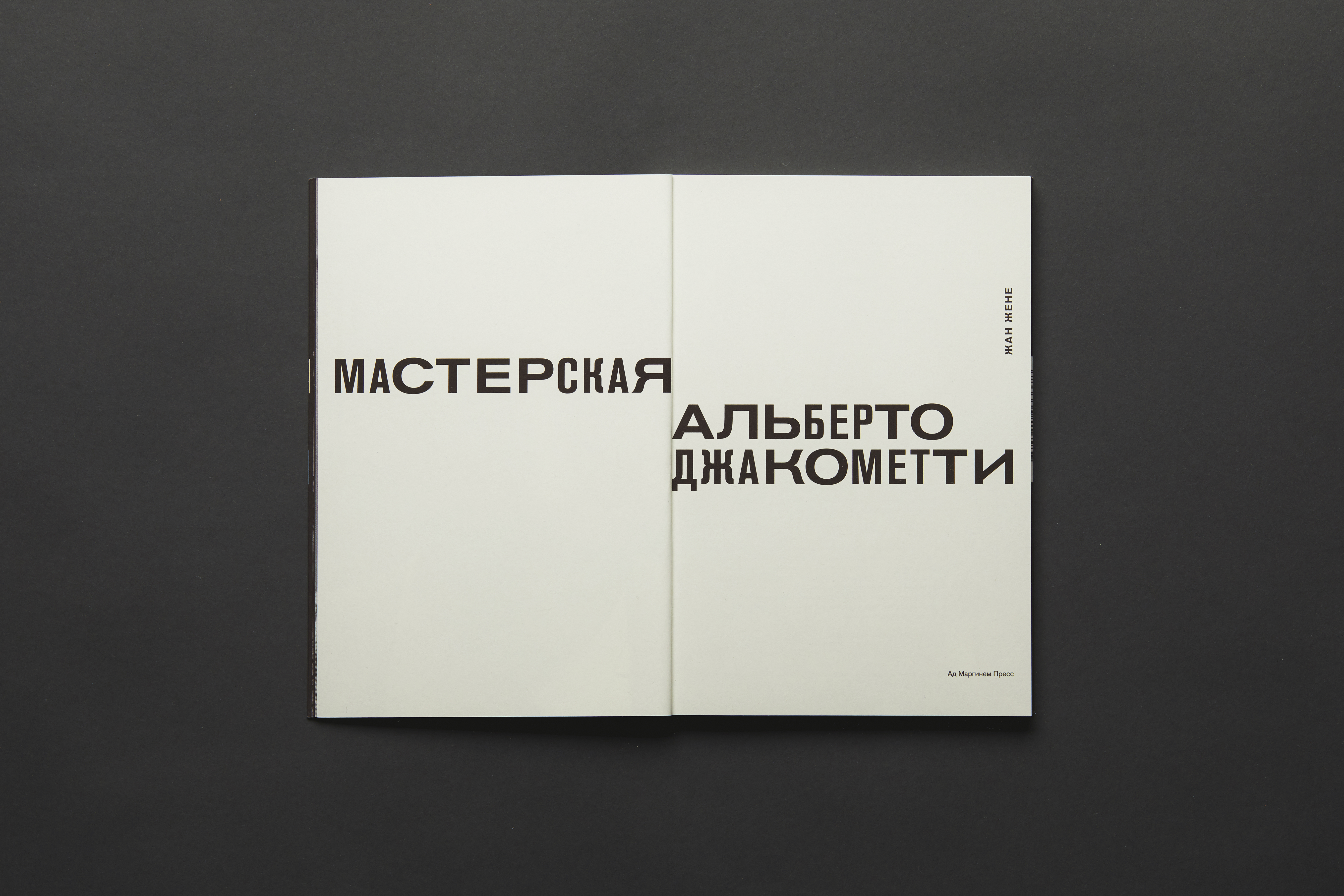


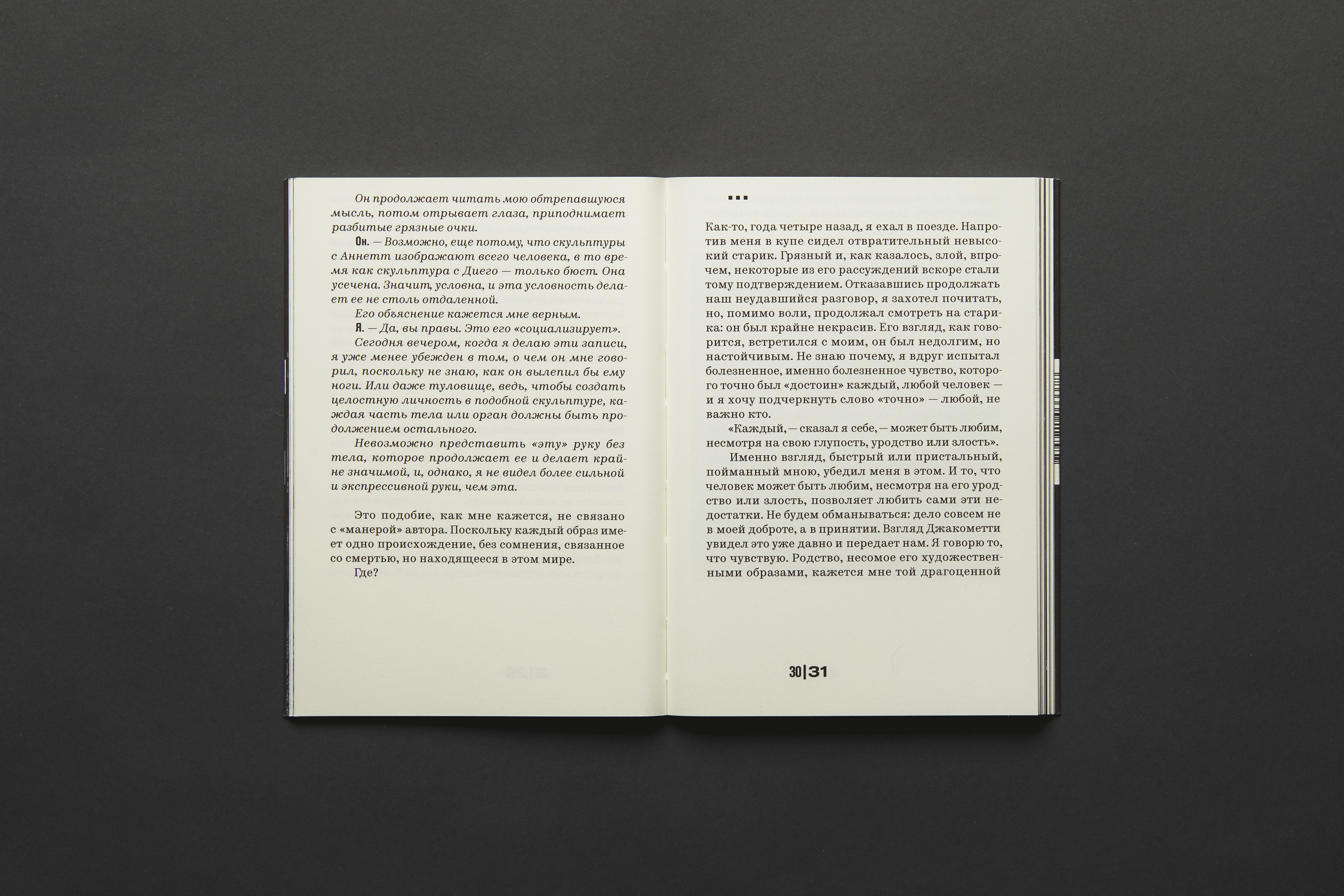
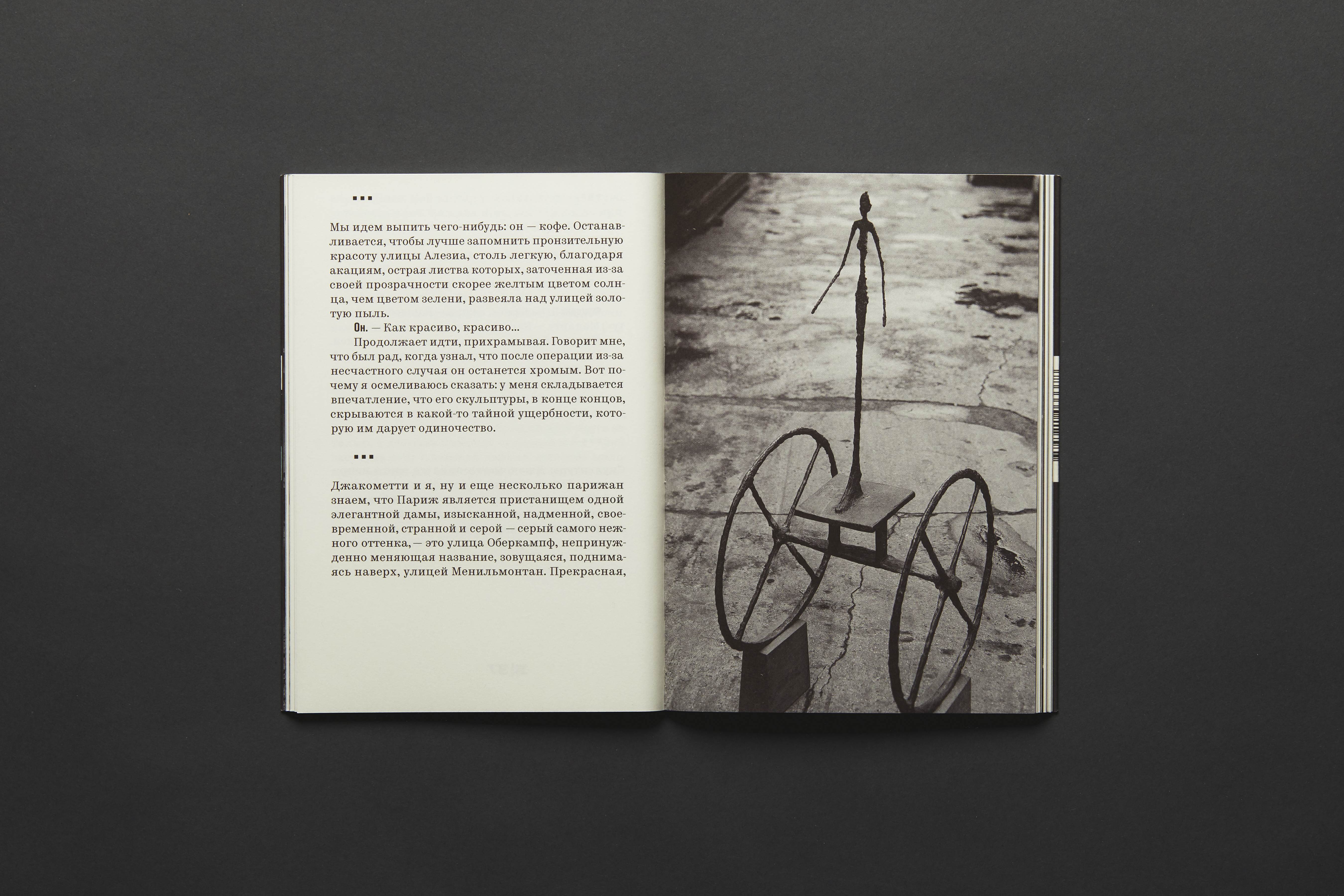
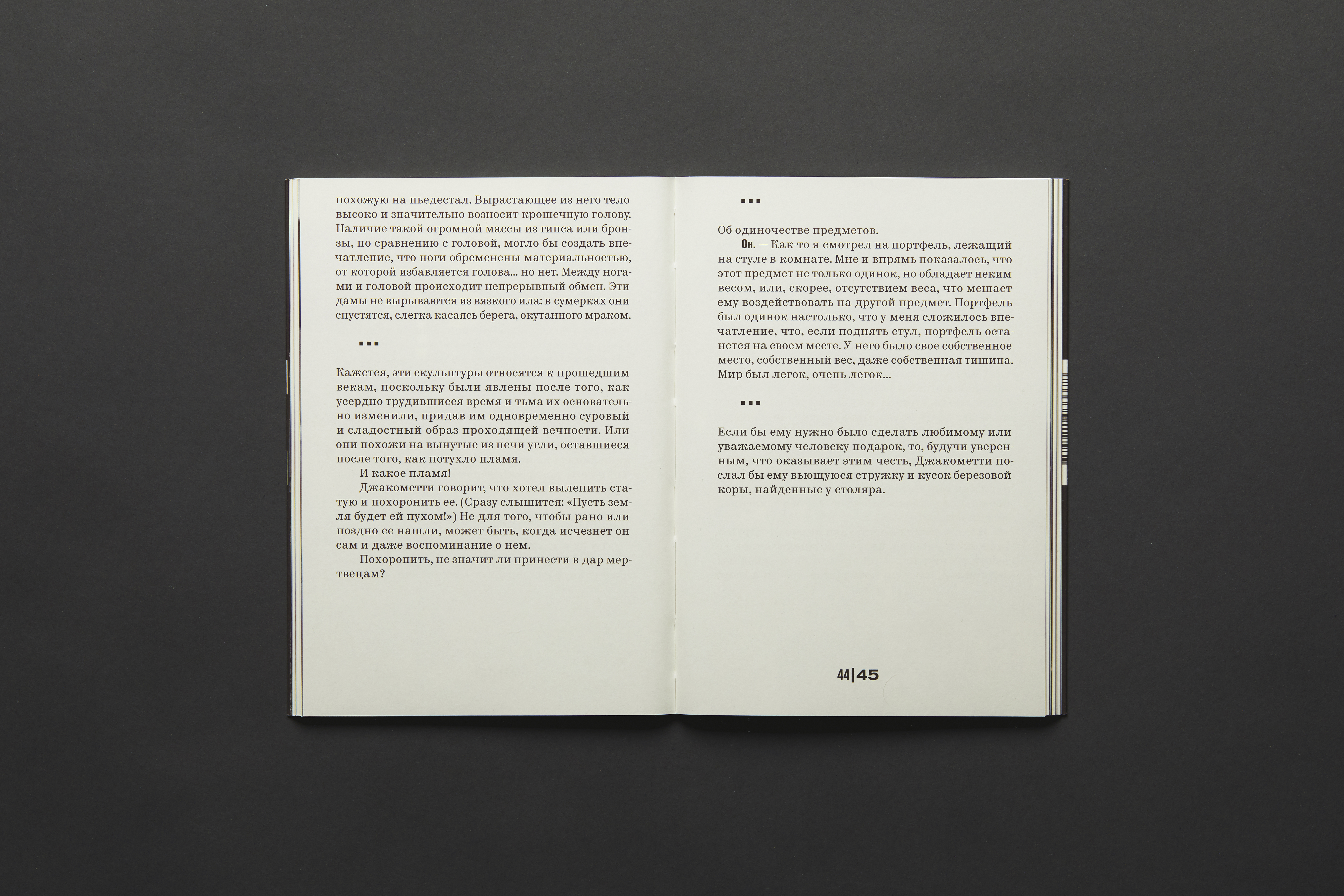
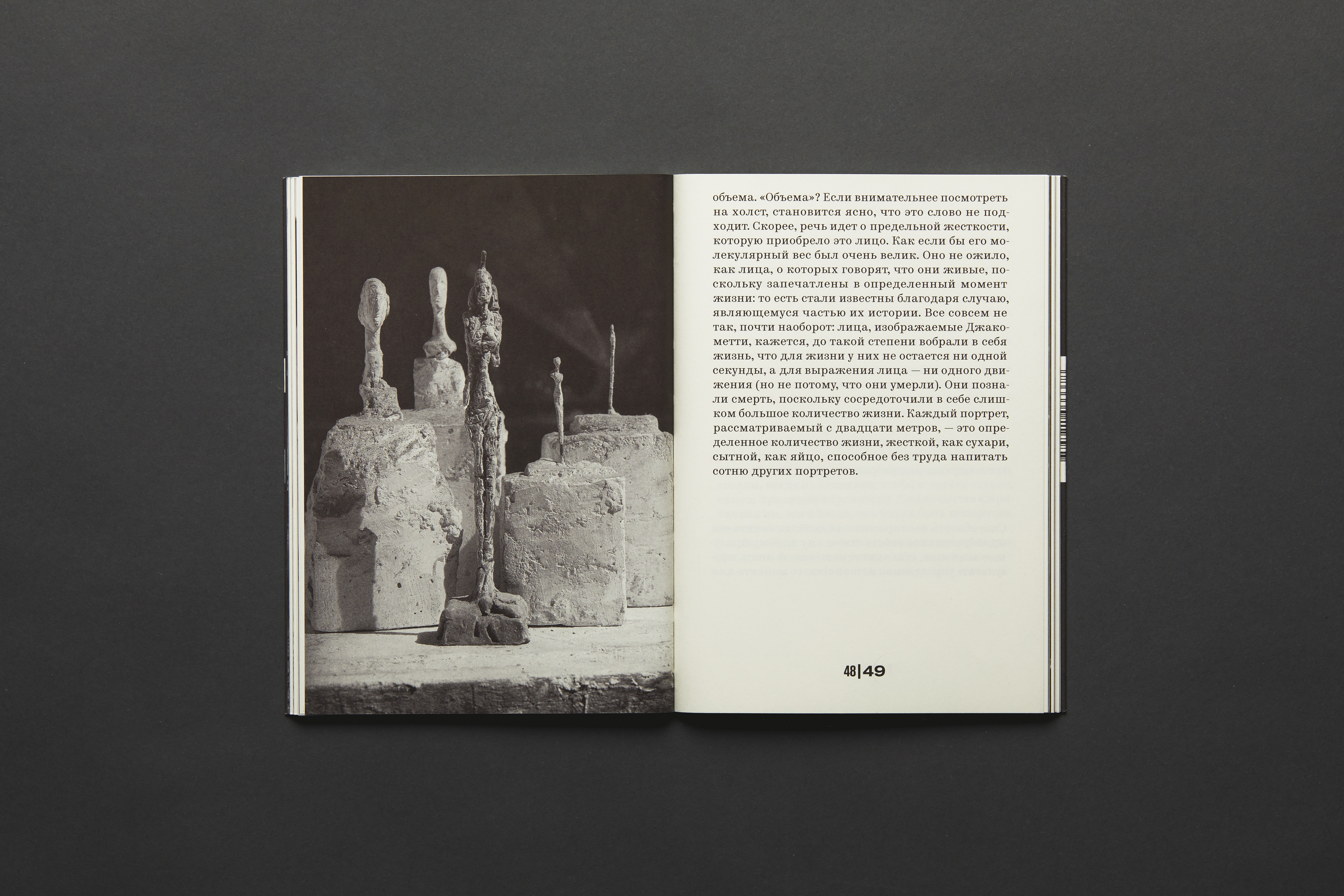
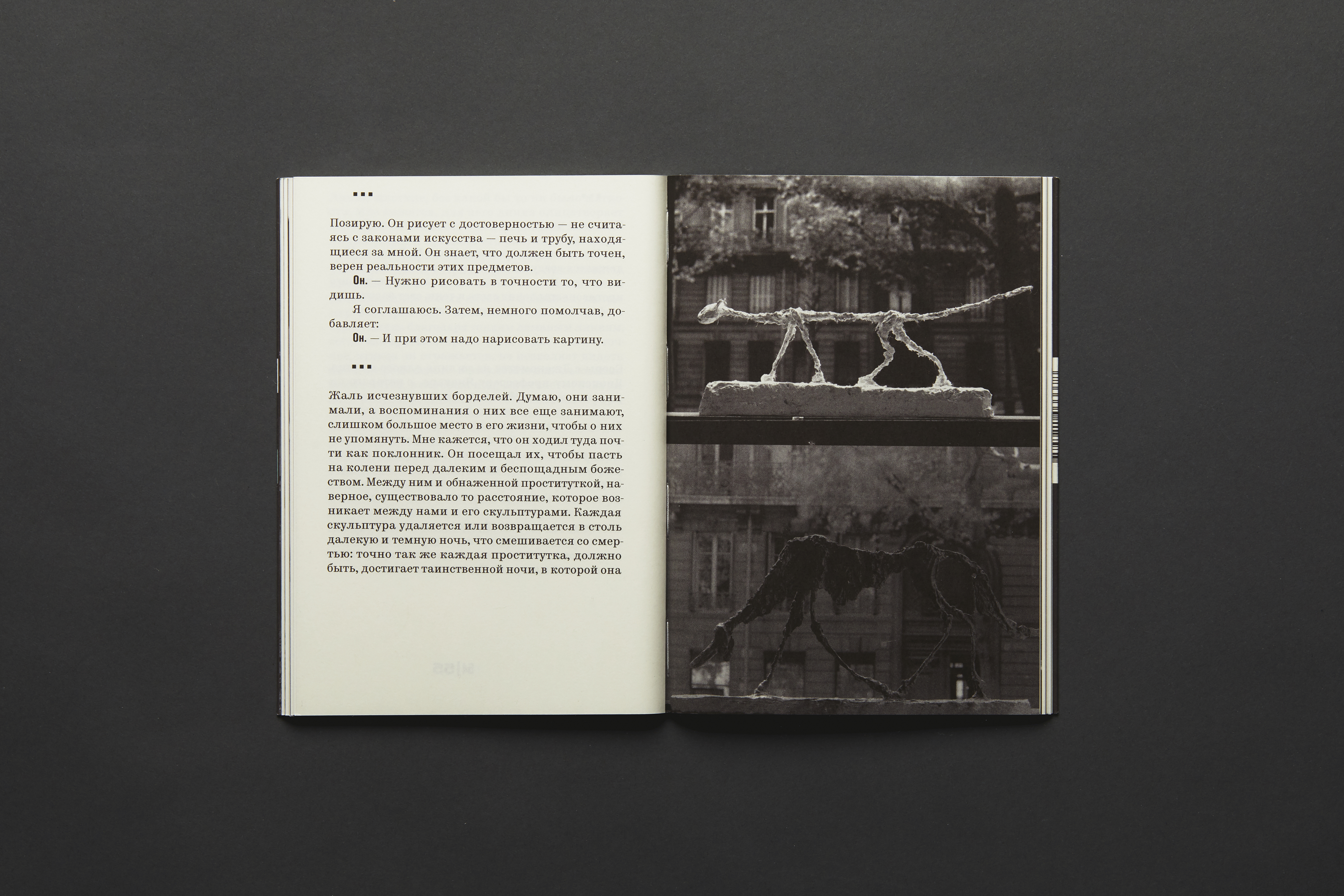


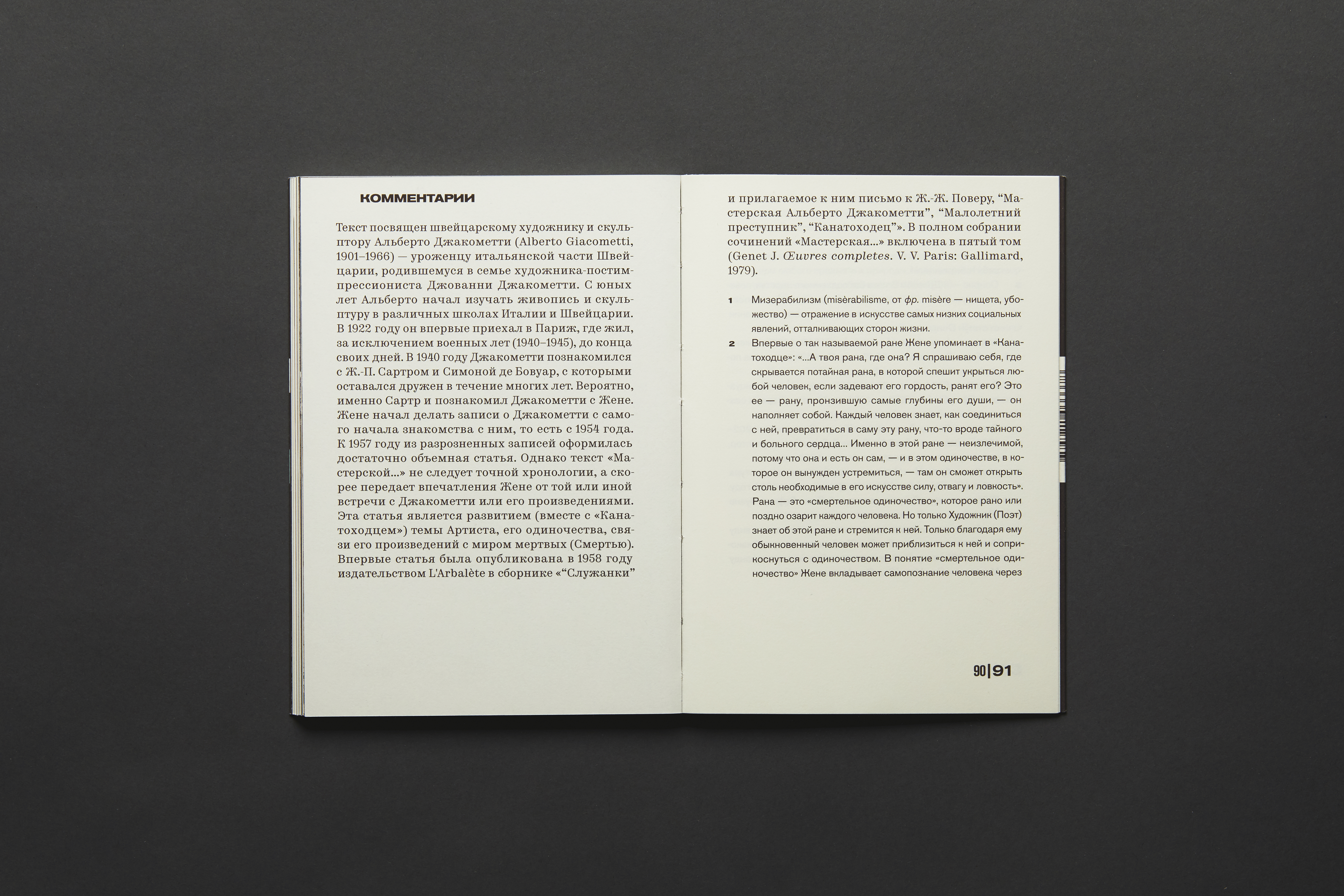
2017
Ad Marginem Press
130 × 185 mm
Paper: Munken 120 g/m²
96 pages
ISBN: 978-5-91103-337-8
Made in ABCdesign
Sixty years after its release with Éditions L’Arbalète, this book remains one of the most precious testimonies of the artist’s work and a unique description of his creative world.
With the permanent reconstruction of the artist’s studio, the visitor will discover what Genet considered to be “the most important and the most complete” of Giacometti’s artworks, “his other self, the essence and ultimate residue of his artistic contribution.” It was in this legendary space, covered in dust and plunged into silence, that Genet, seated on an uncomfortable straw chair, posed on several occasions between 1954 and 1957. Between the two men, an intense dialogue was established, which revealed the very essence of art and of Giacometti’s personality. ©
Ad Marginem Press
130 × 185 mm
Paper: Munken 120 g/m²
96 pages
ISBN: 978-5-91103-337-8
Made in ABCdesign
Sixty years after its release with Éditions L’Arbalète, this book remains one of the most precious testimonies of the artist’s work and a unique description of his creative world.
With the permanent reconstruction of the artist’s studio, the visitor will discover what Genet considered to be “the most important and the most complete” of Giacometti’s artworks, “his other self, the essence and ultimate residue of his artistic contribution.” It was in this legendary space, covered in dust and plunged into silence, that Genet, seated on an uncomfortable straw chair, posed on several occasions between 1954 and 1957. Between the two men, an intense dialogue was established, which revealed the very essence of art and of Giacometti’s personality. ©
Цай Гоцян. Октябрь
Cai Guo Qiang. October


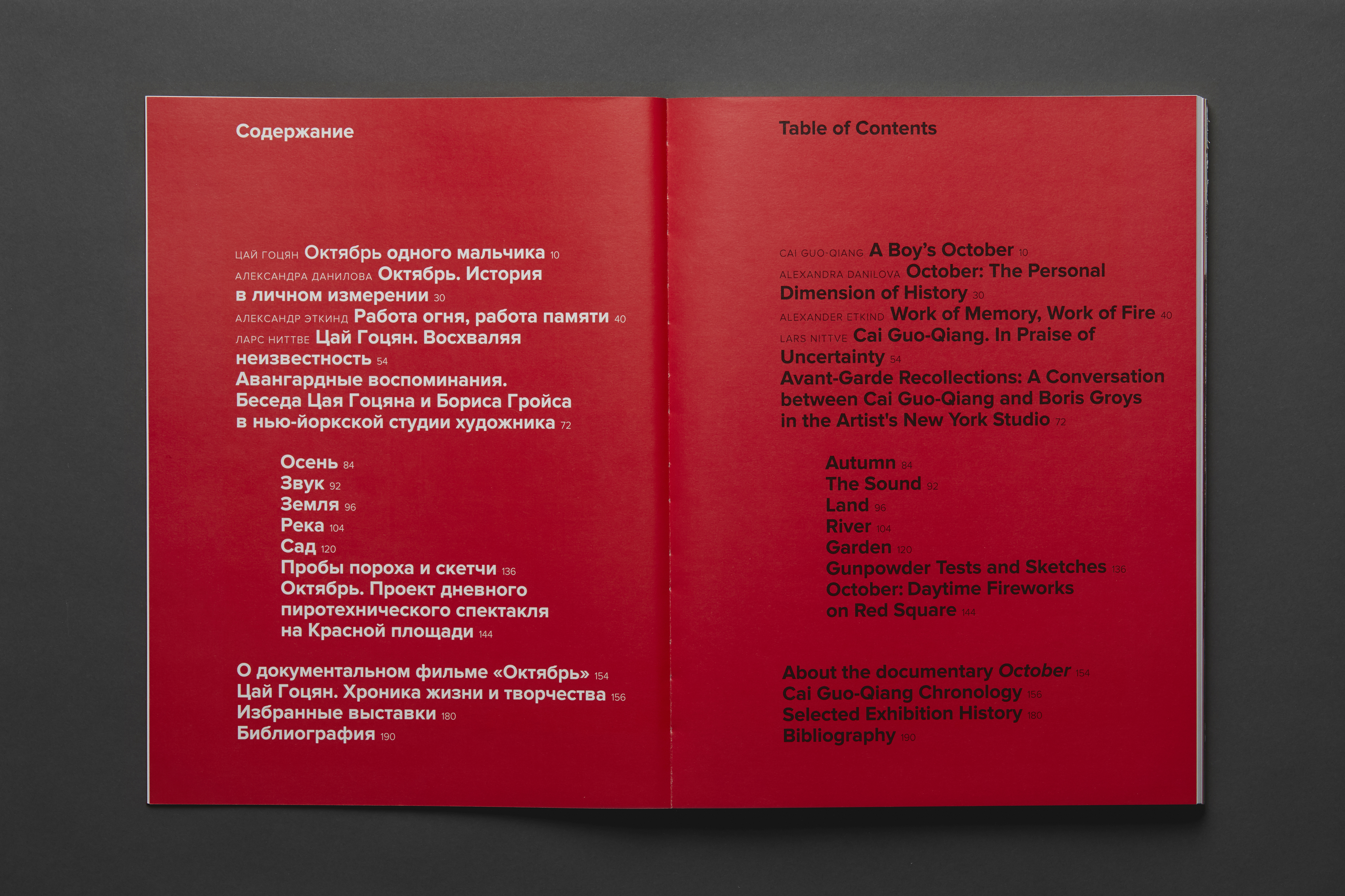
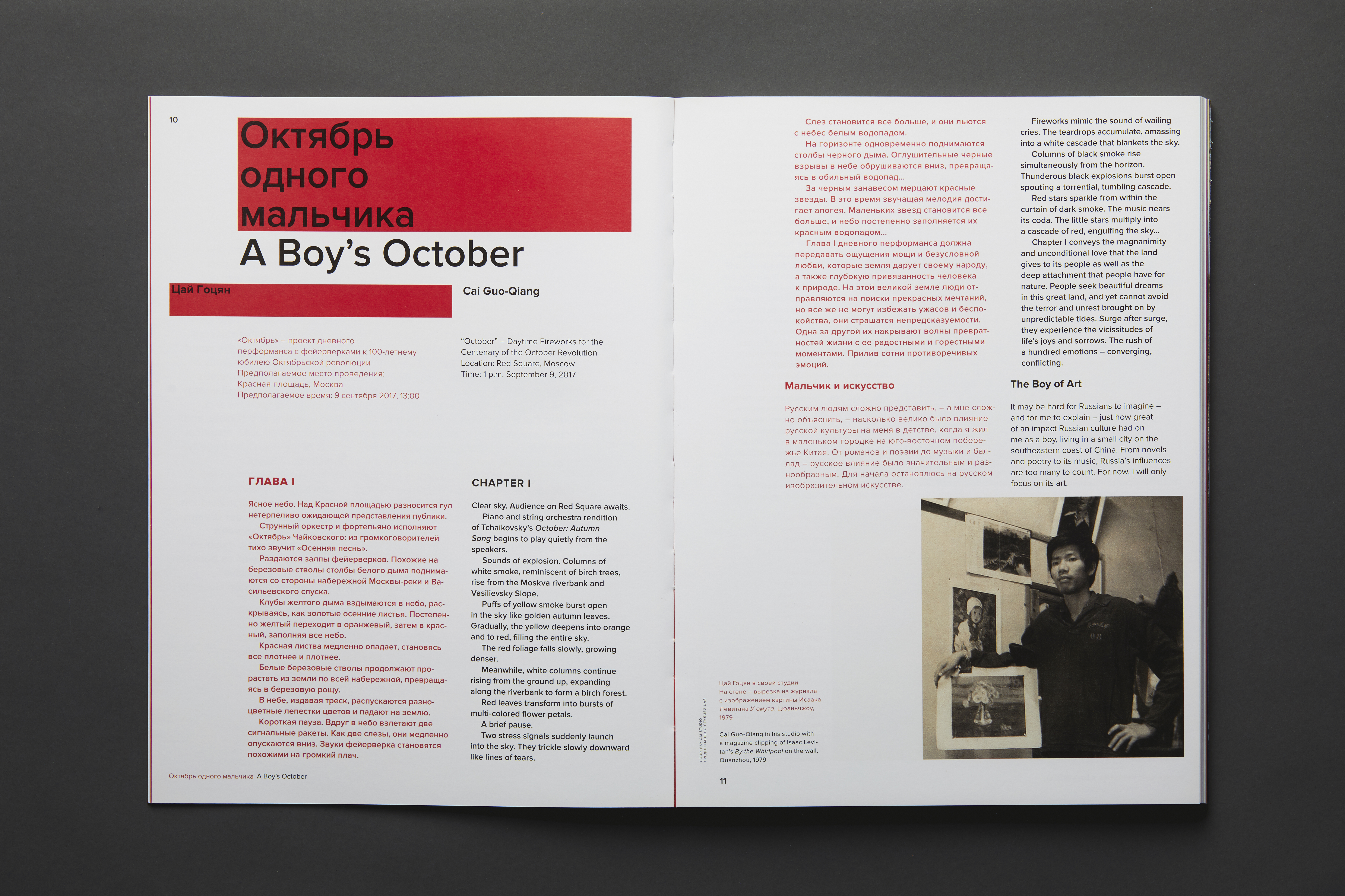
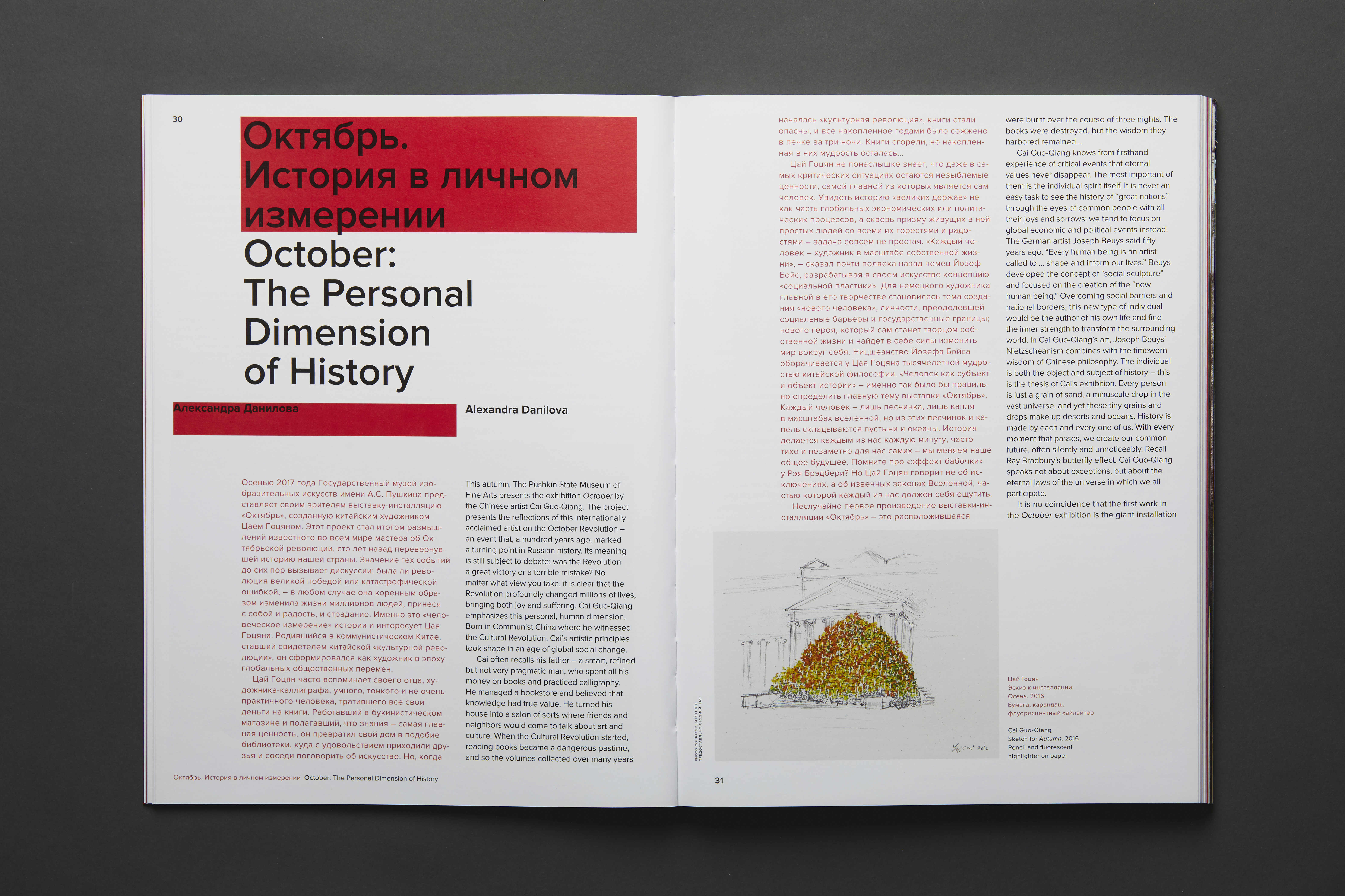

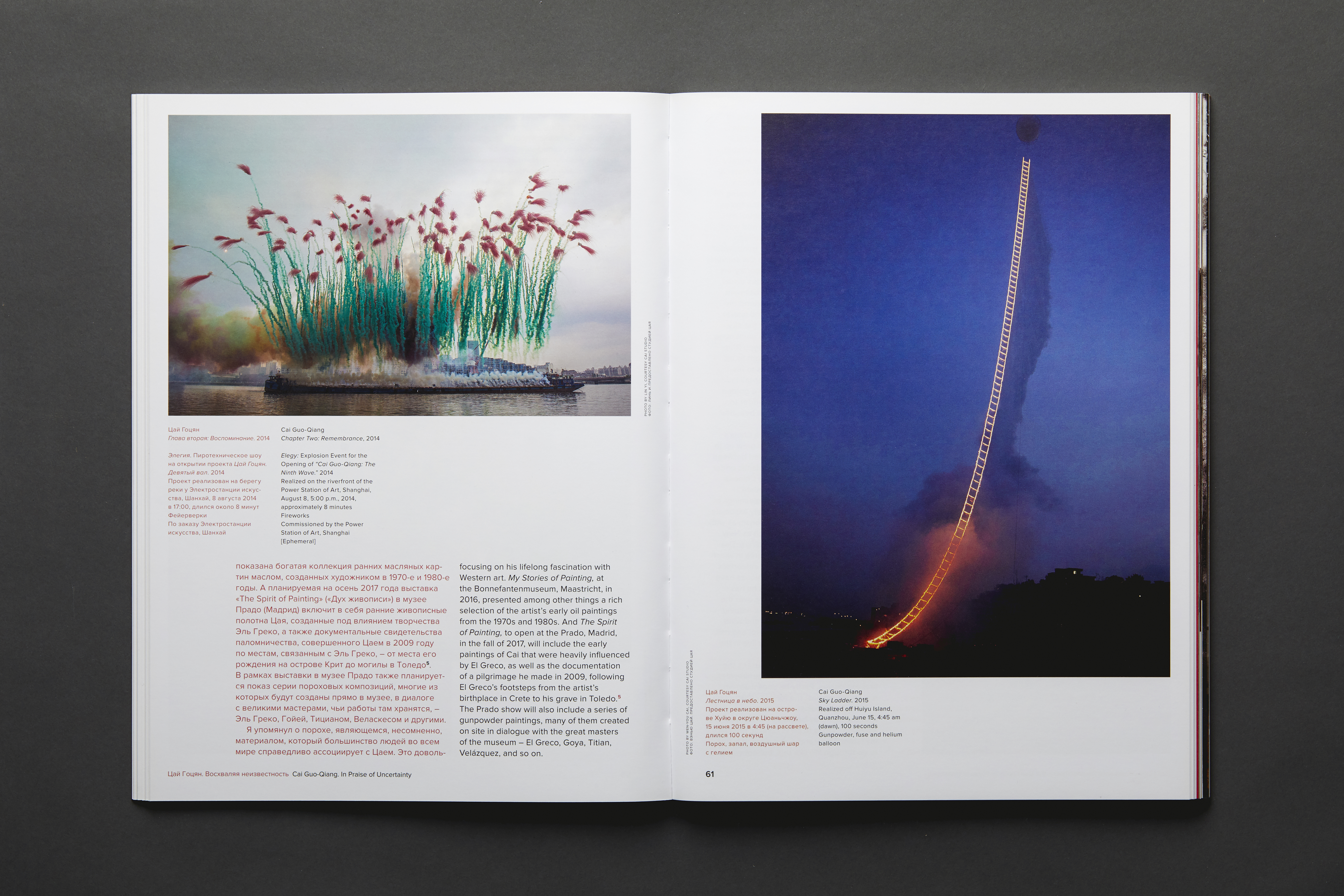
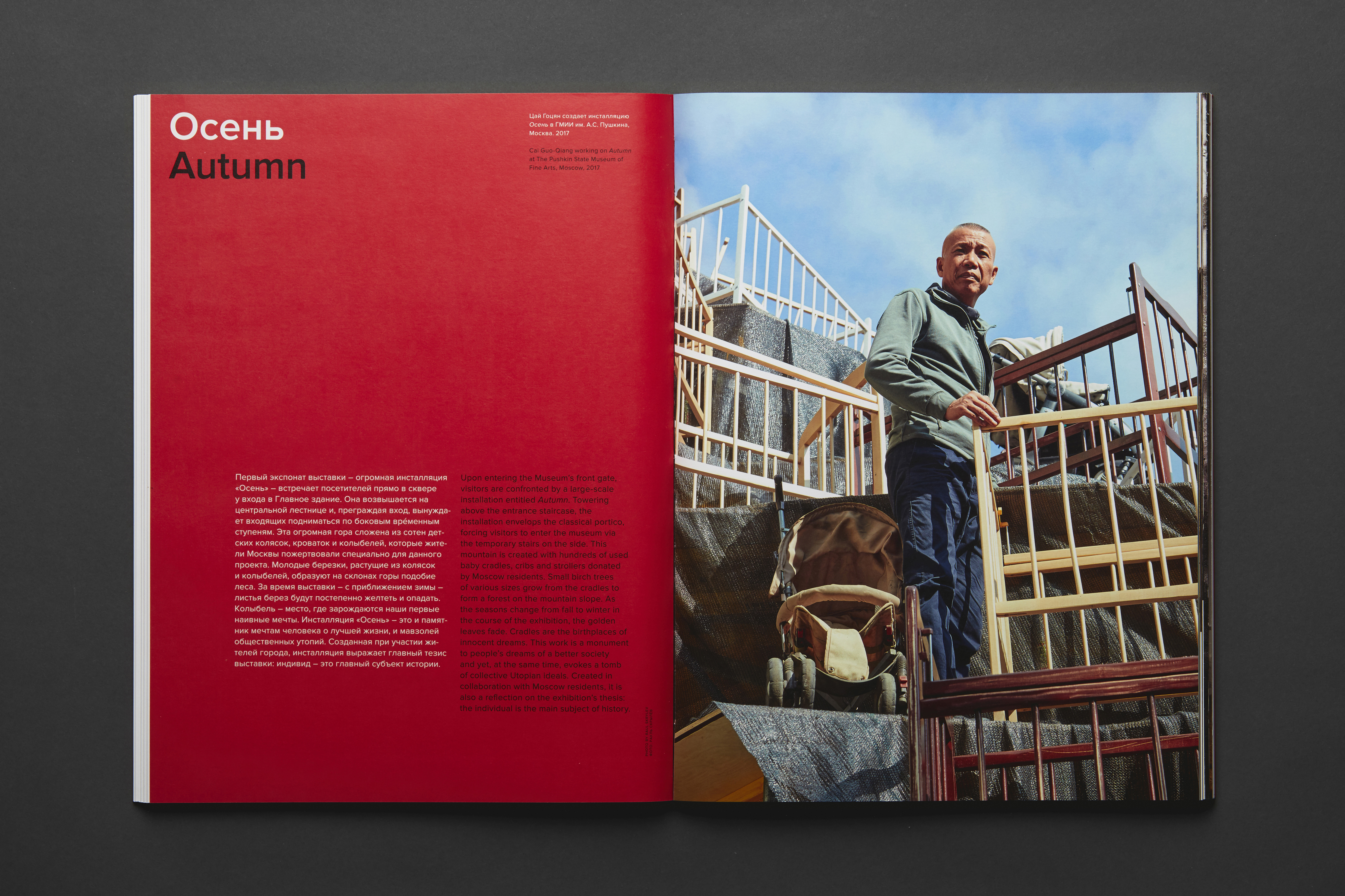

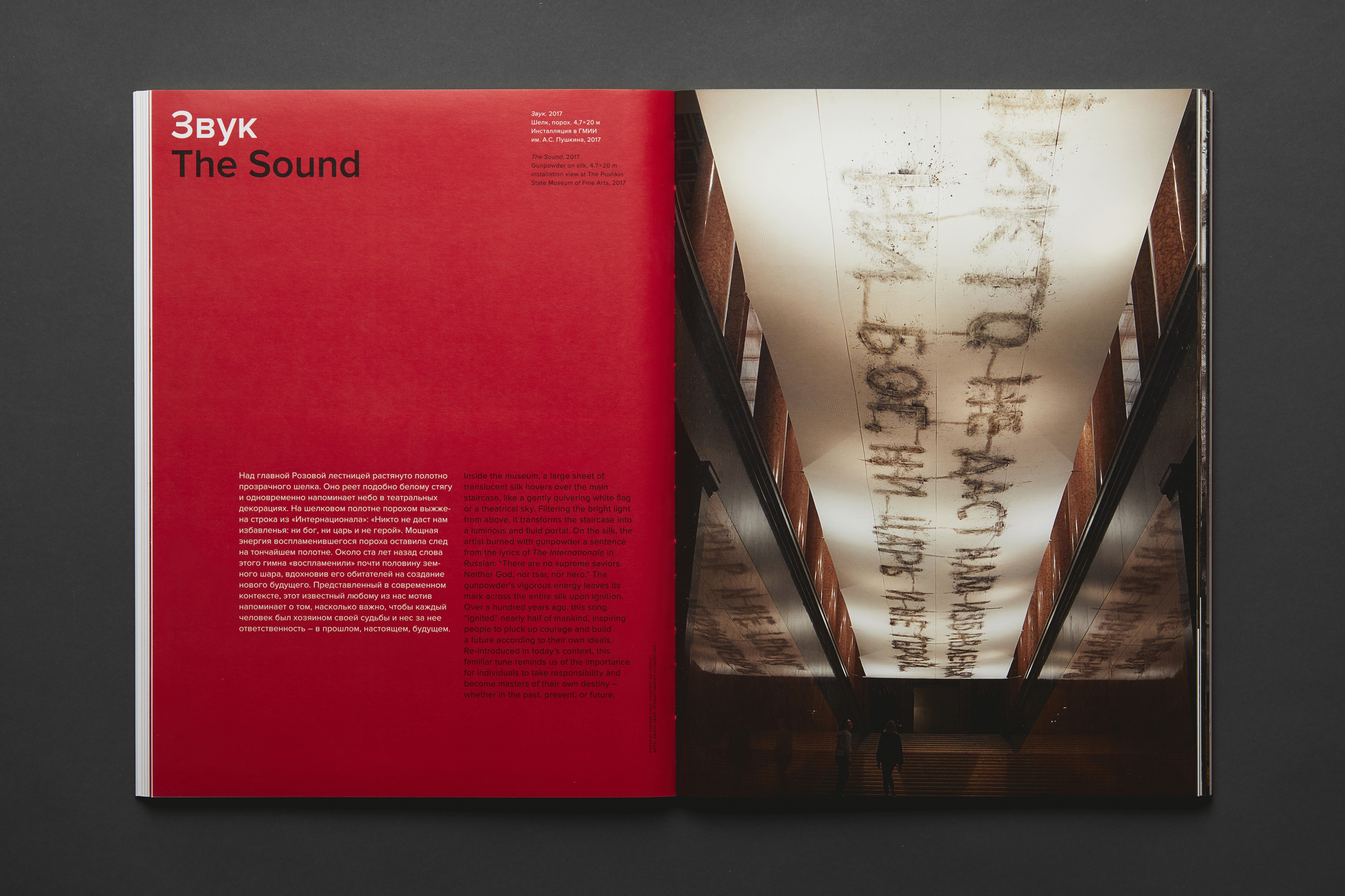
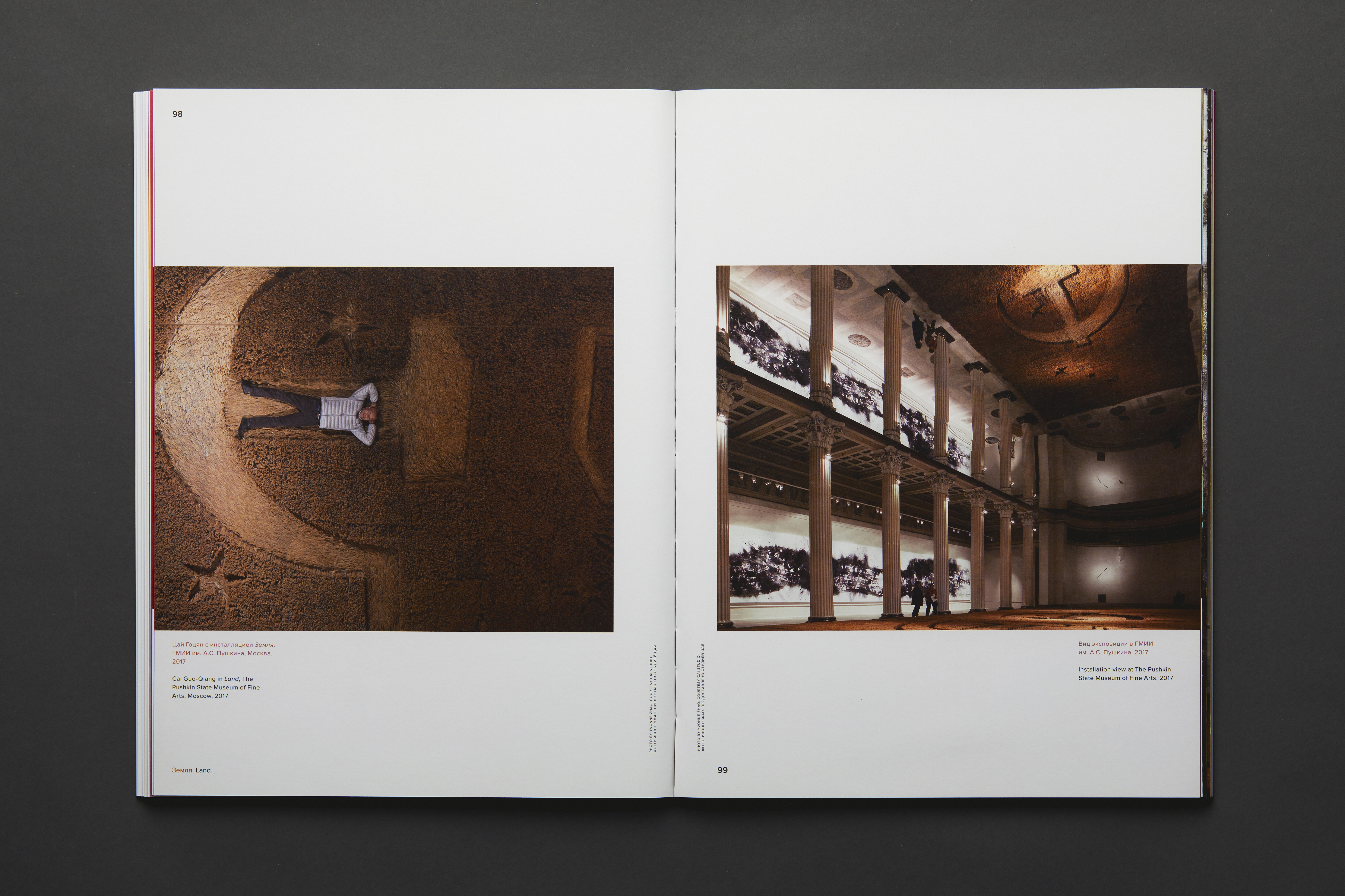
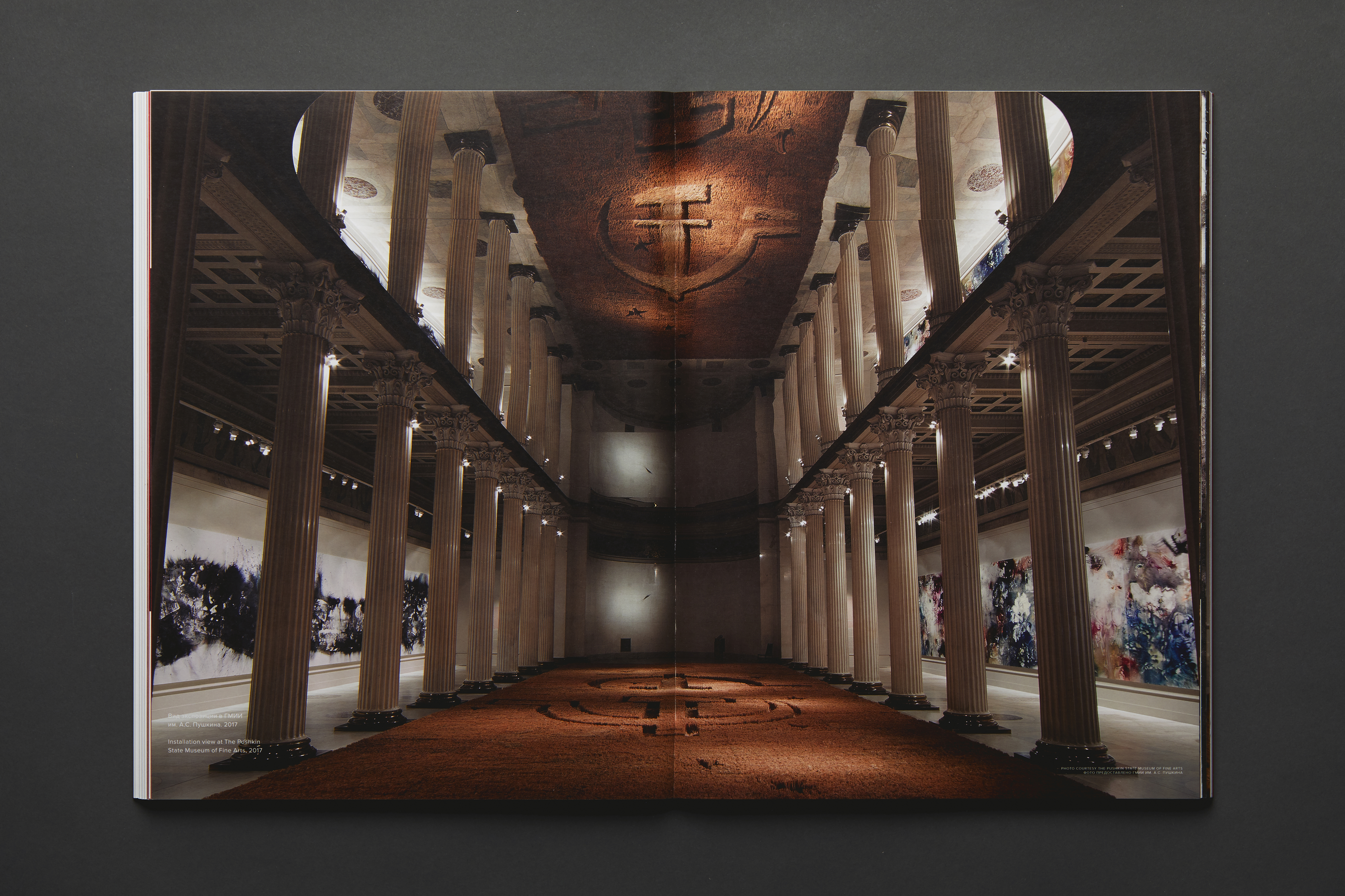
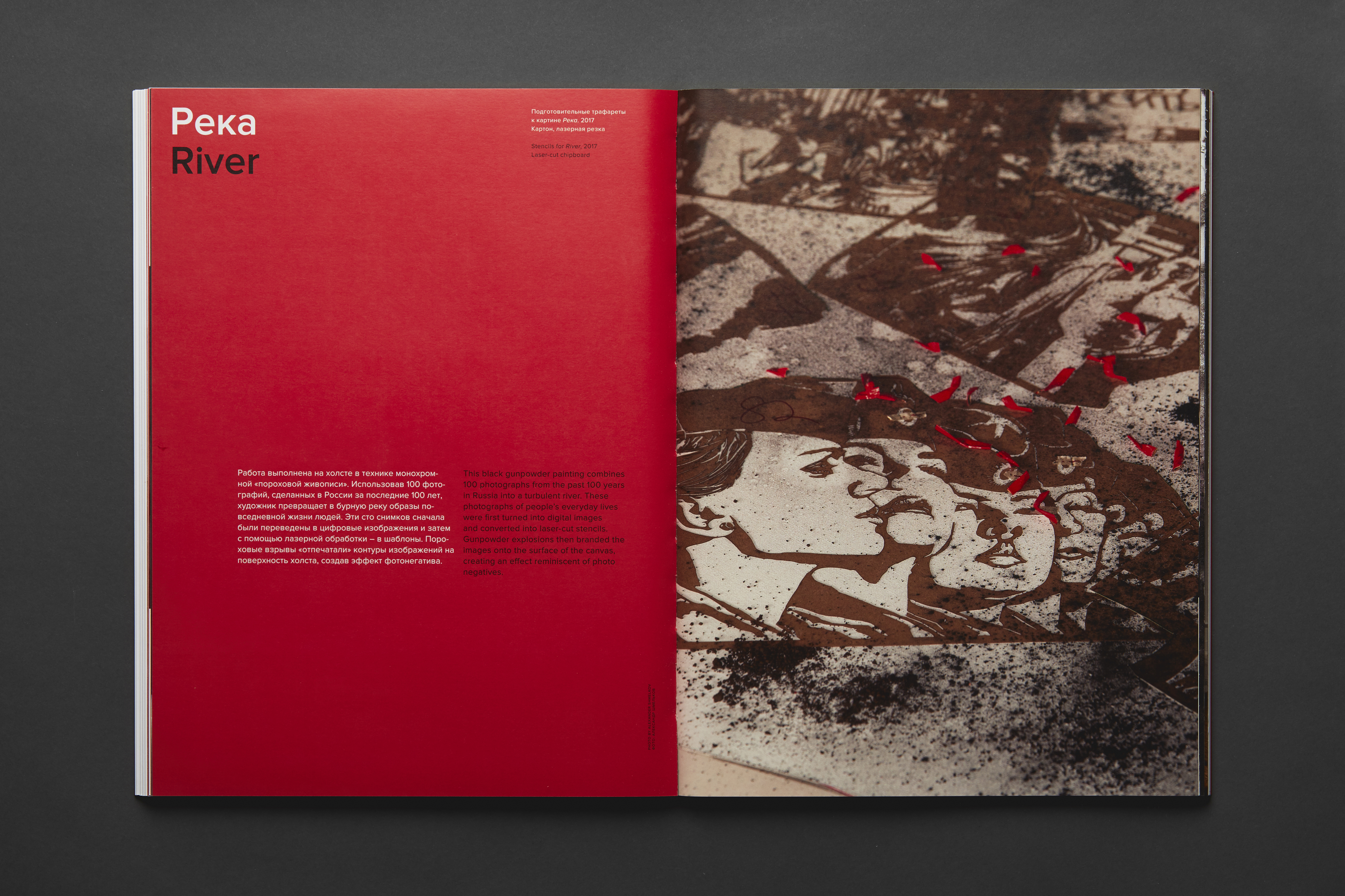
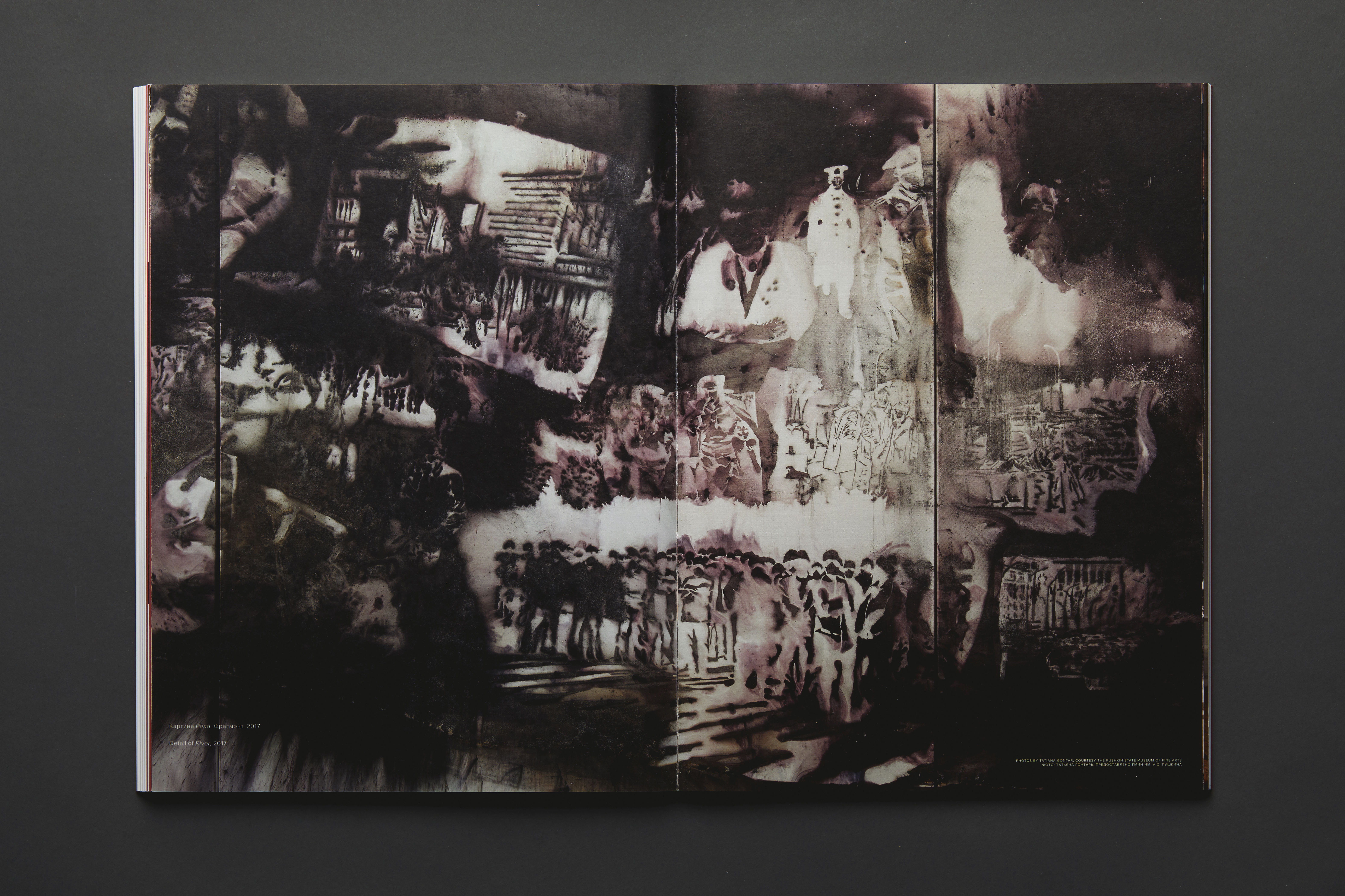
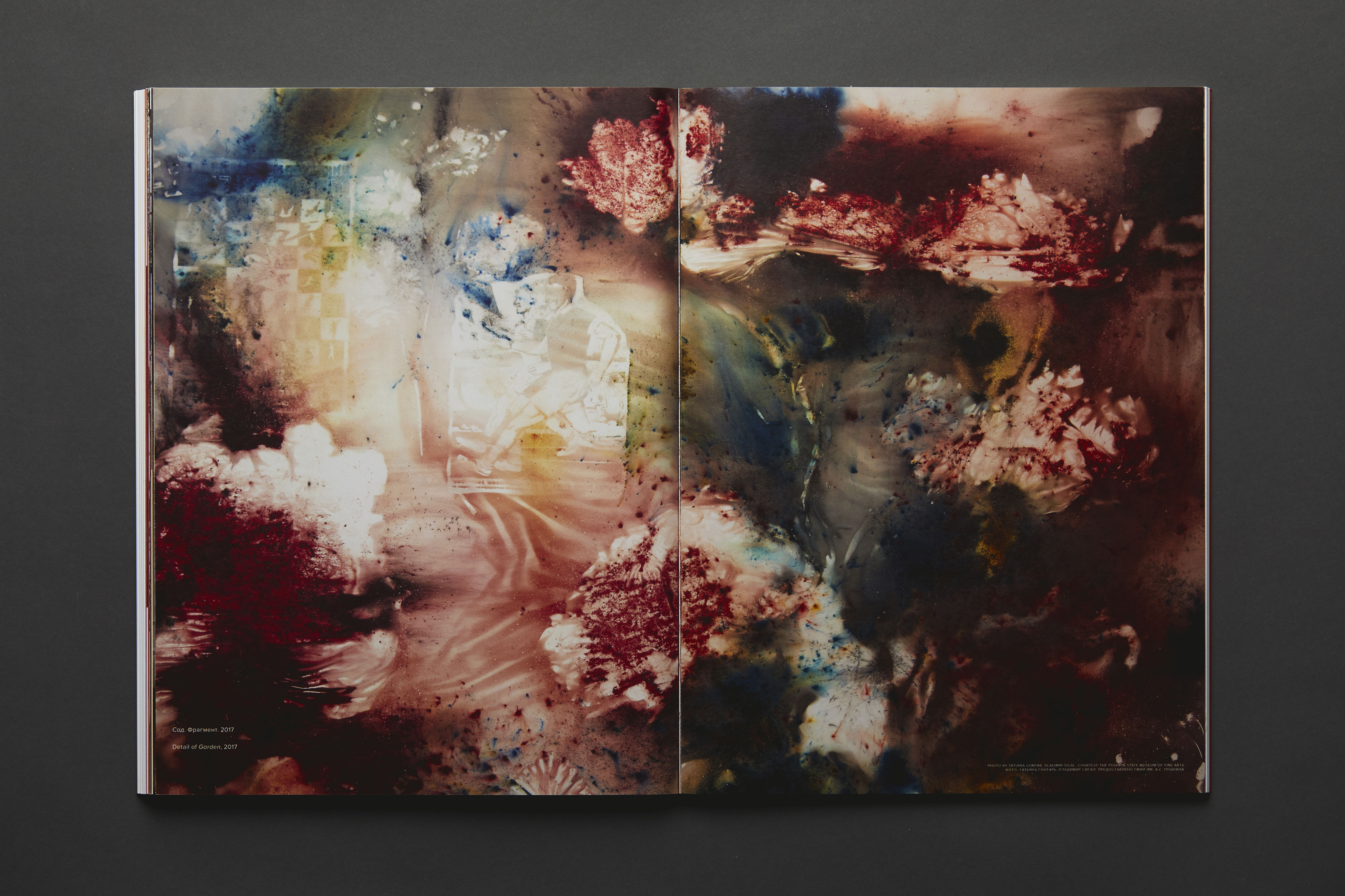
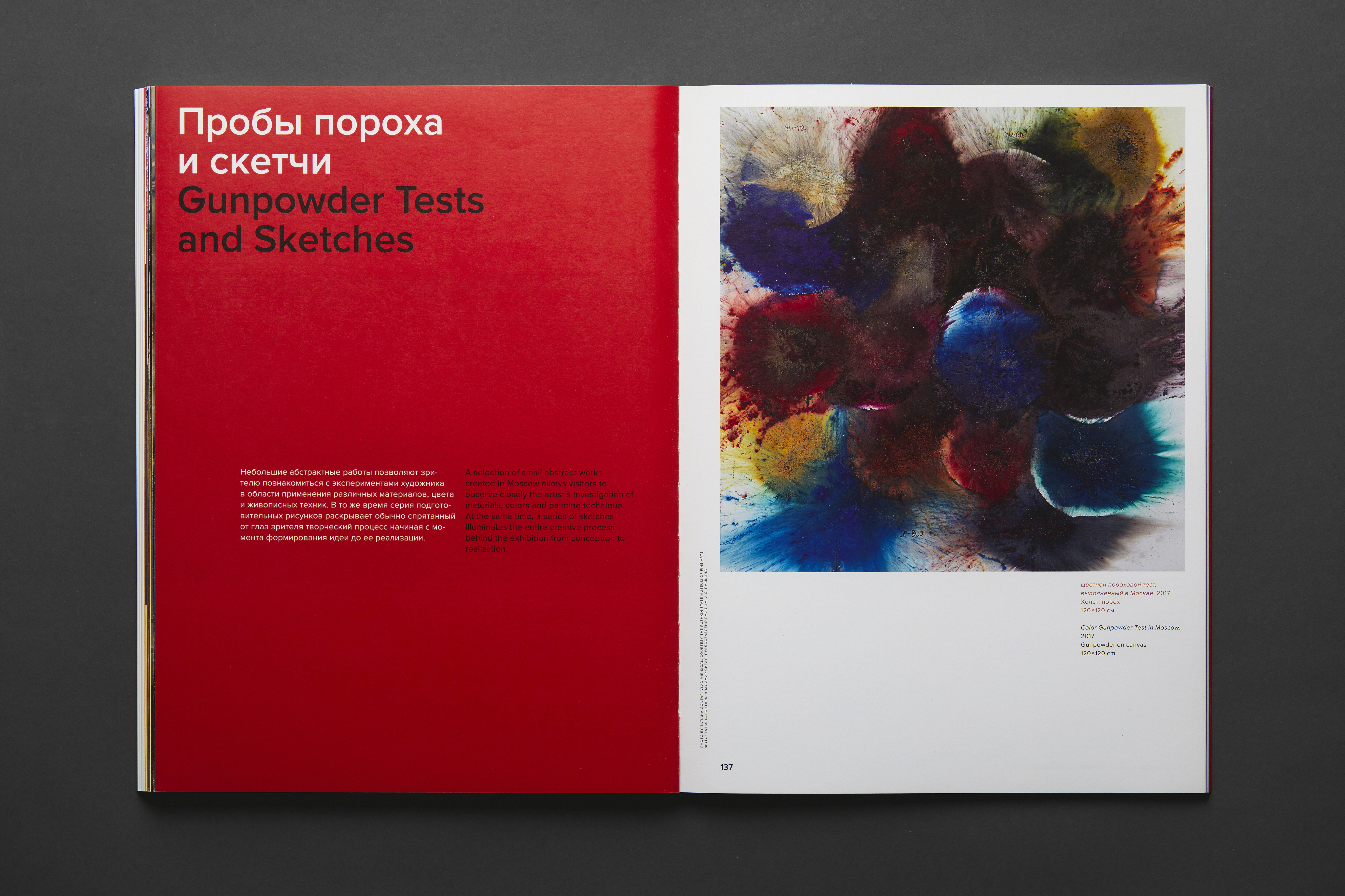
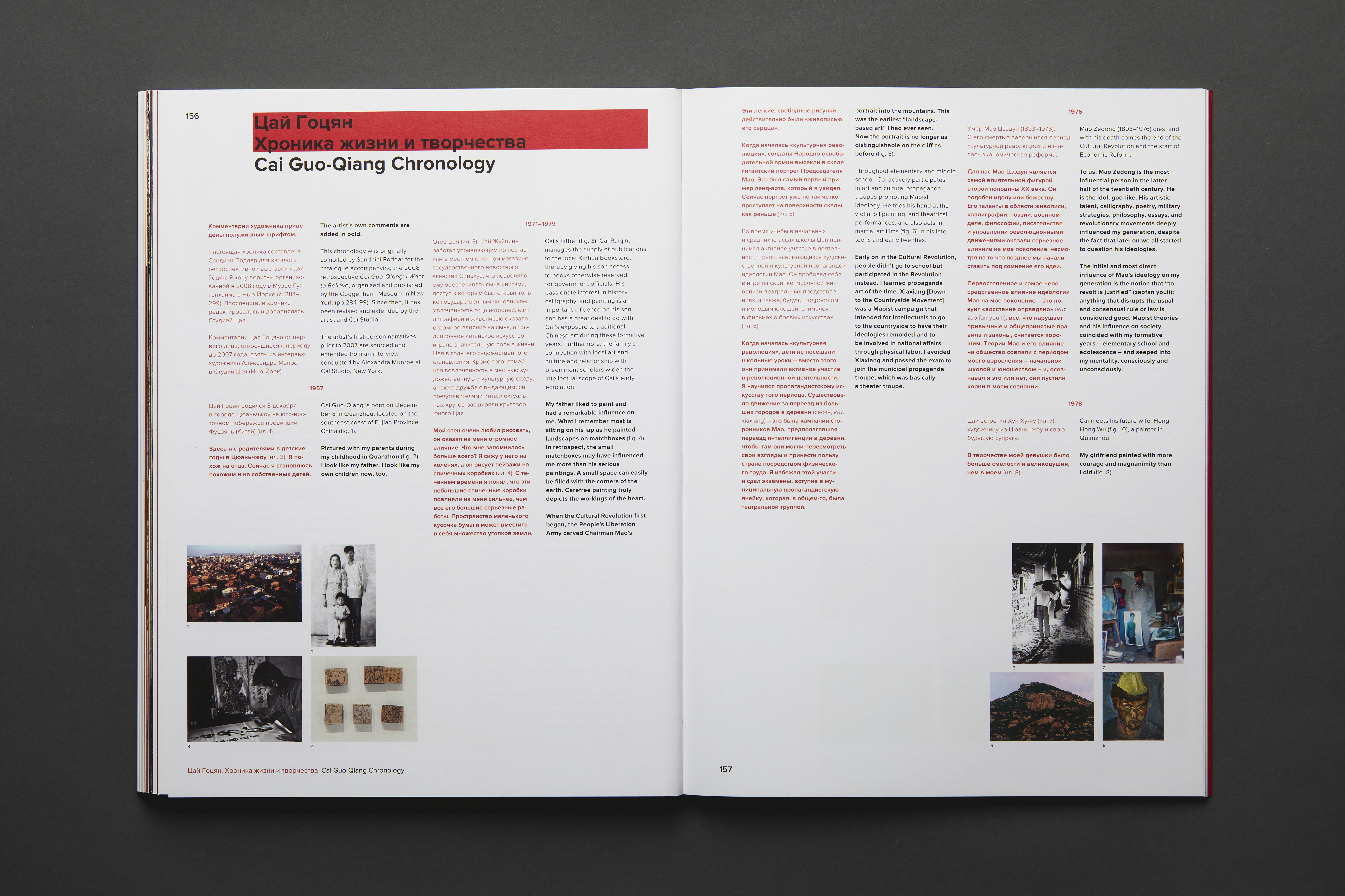
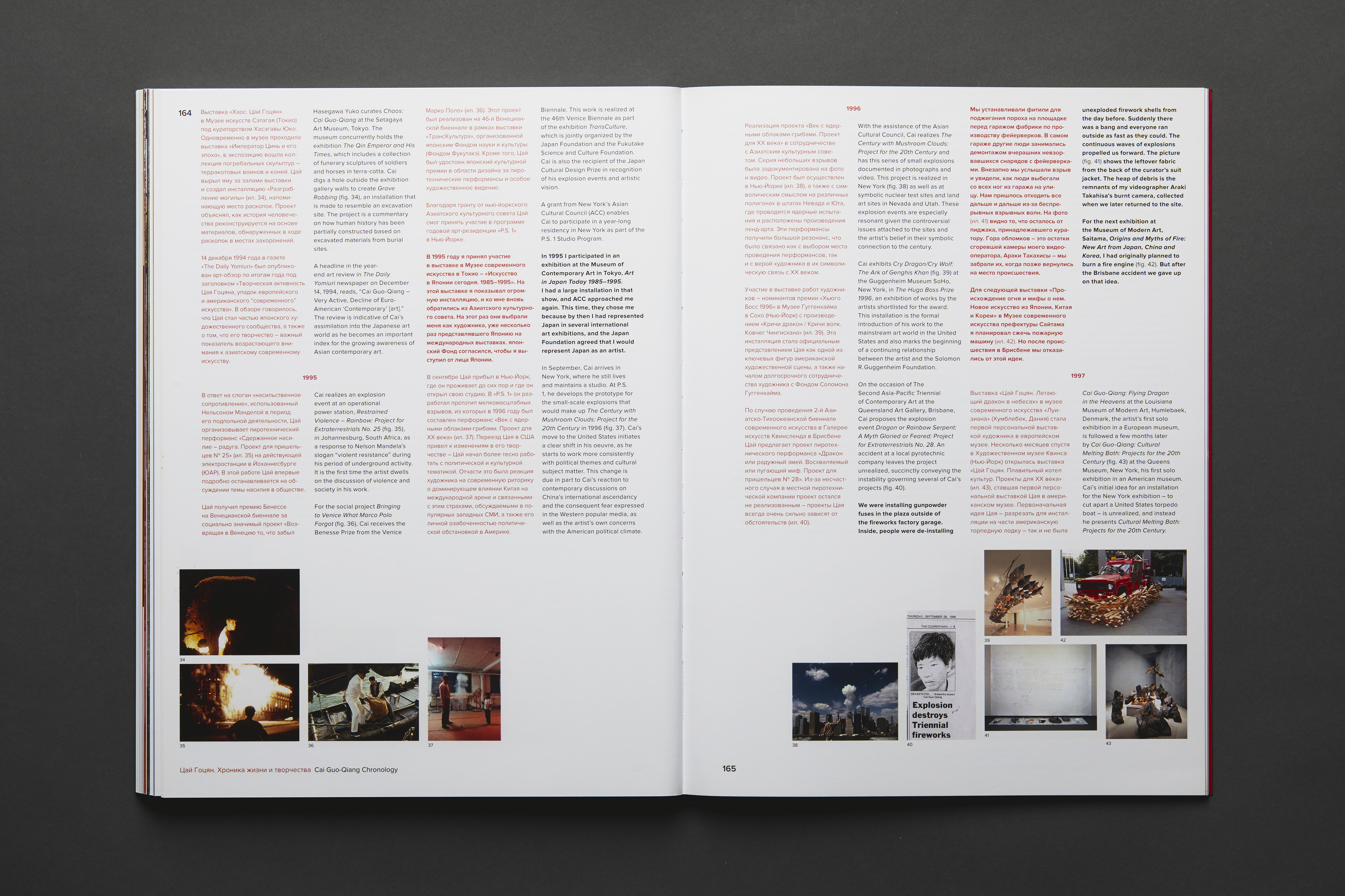
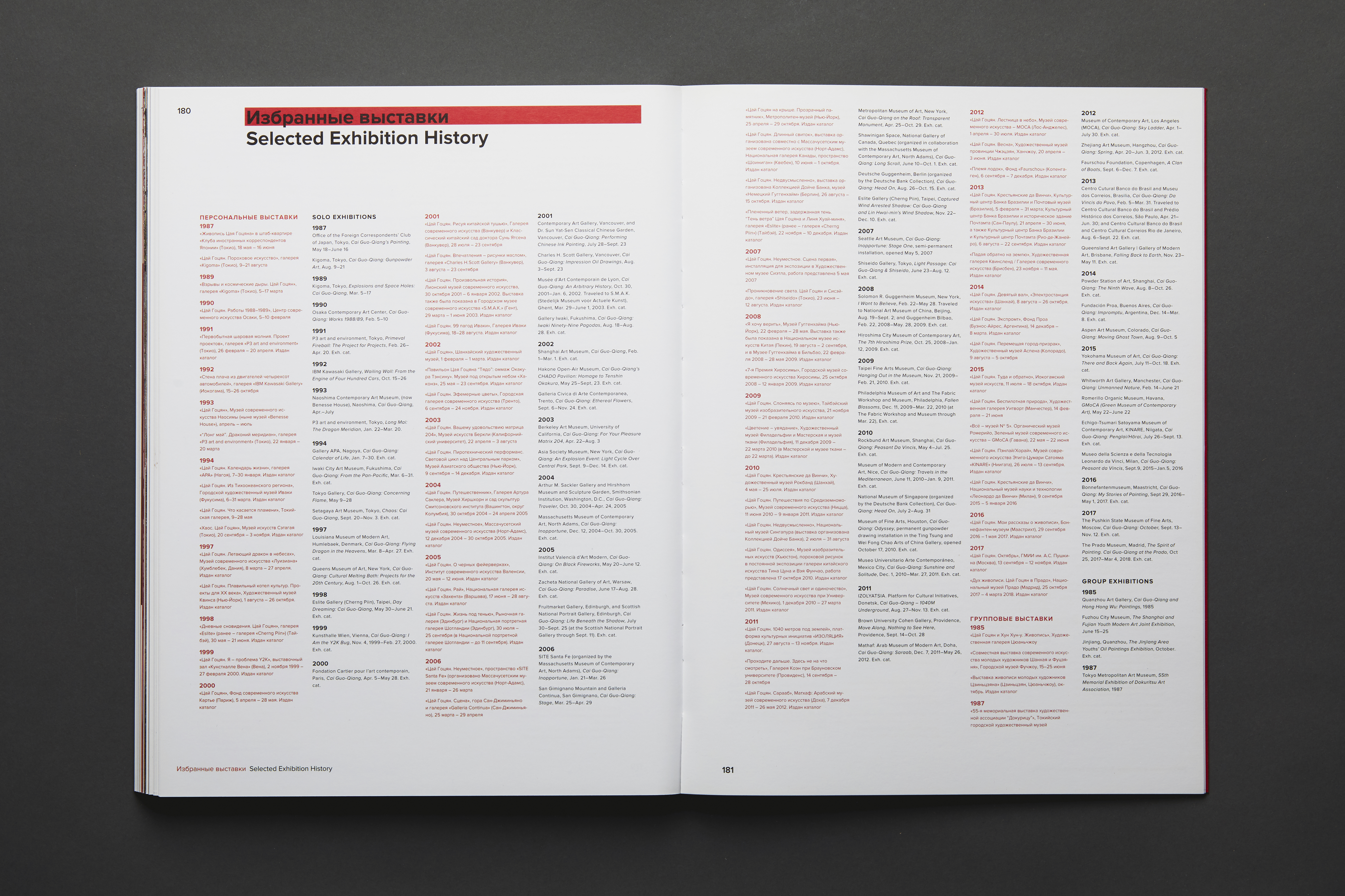
2017
240 × 320 mm
Paper: HannoArt Bulk 150 g/m²
192 pages
ISBN: 978-5-4330-0078-0
Made in ABCdesign
The Pushkin State Museum of Fine Arts presented contemporary artist Cai Guo-Qiang’s first solo exhibition in Russia this September: Cai Guo-Qiang: October. A reflection on the 100th anniversary of the Russian Revolution, the ambitious body of work originally created for the exhibition will transform the main exhibition areas of the museum. Artworks include large-scale outdoor and indoor installations, gunpowder paintings, a multi-media video installation, and small-scale sculptures and sketches. ©
A bilingual catalogue in English and Russian will be available at the end of September. In addition to numerous images detailing the process and outcome of the exhibition, the catalogue will also include Cai’s stirring personal essay A Boy’s October and scholarly contributions by Alexandra Danilova, Alexander Etkins, Boris Groys, Lars Nittve. The catalogue integrates personal, historical, artistic and political perspectives, echoing and responding to the themes and questions raised by the exhibition. ©
240 × 320 mm
Paper: HannoArt Bulk 150 g/m²
192 pages
ISBN: 978-5-4330-0078-0
Made in ABCdesign
The Pushkin State Museum of Fine Arts presented contemporary artist Cai Guo-Qiang’s first solo exhibition in Russia this September: Cai Guo-Qiang: October. A reflection on the 100th anniversary of the Russian Revolution, the ambitious body of work originally created for the exhibition will transform the main exhibition areas of the museum. Artworks include large-scale outdoor and indoor installations, gunpowder paintings, a multi-media video installation, and small-scale sculptures and sketches. ©
A bilingual catalogue in English and Russian will be available at the end of September. In addition to numerous images detailing the process and outcome of the exhibition, the catalogue will also include Cai’s stirring personal essay A Boy’s October and scholarly contributions by Alexandra Danilova, Alexander Etkins, Boris Groys, Lars Nittve. The catalogue integrates personal, historical, artistic and political perspectives, echoing and responding to the themes and questions raised by the exhibition. ©